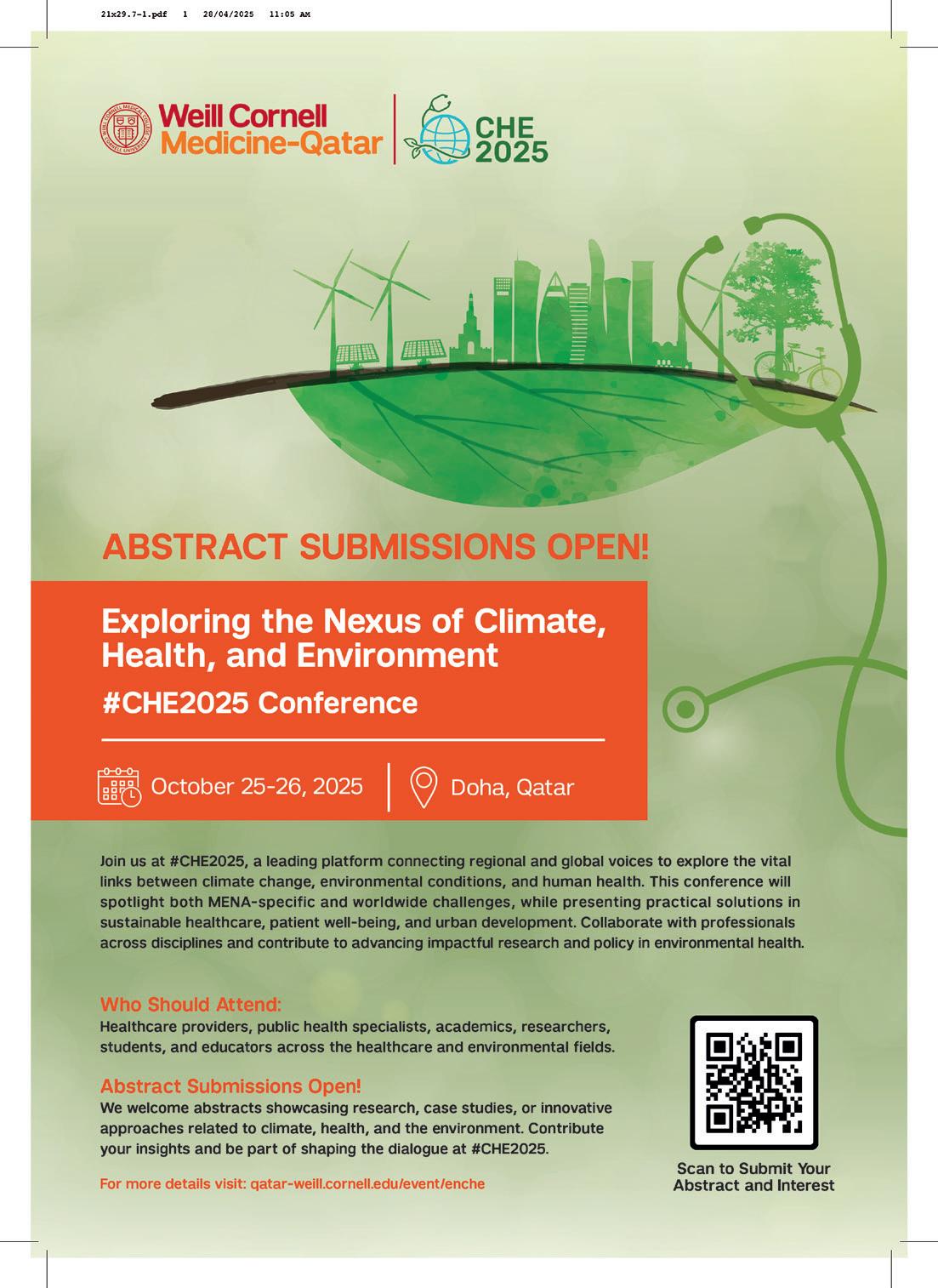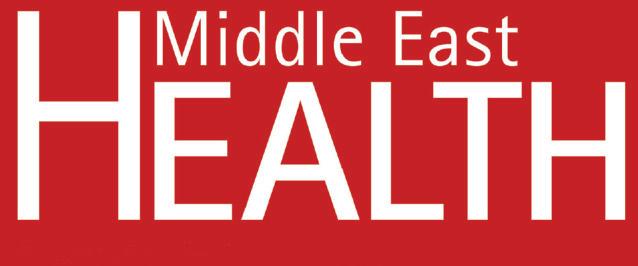

Capacity building in the Middle East
We speak to Vivek Kanade, head of Siemens Healthineers, ME&A to find out how they are bridging the gaps
Women’s Health
Novel therapeutic target discovered for female mitochondrial cardiomyopathy
Surgery
Prothrombin complex concentrate outperforms frozen plasma in managing bleeding during cardiac surgery
In the News
• Cleveland Clinic Abu Dhabi performs first transcontinental robotic prostate cancer procedure
• Sheikh Shakhbout Medical City launches dedicated Cancer Survivorship Clinic
• WHO issues new guidelines to combat medicalized FGM and improve survivor care
• Global burns research project identifies top 10 priorities across 88 countries
• Physical activity reduces depression risk in adolescents, longitudinal study finds
• Grasping movements could offer simpler autism diagnosis path, finds new study



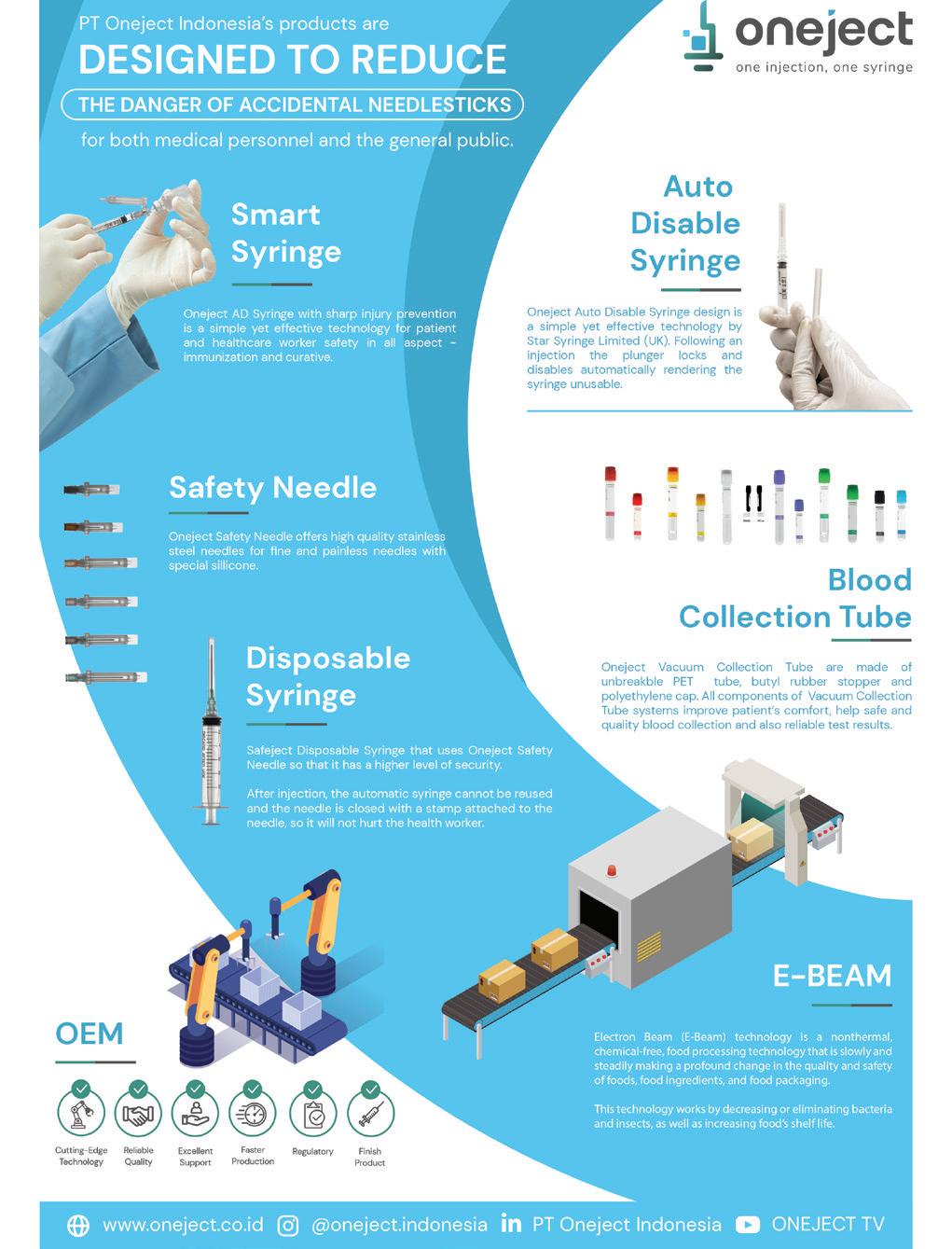
Prognosis
Reshaping the healthcare landscape
Healthcare continues its rapid evolution with several groundbreaking developments that promise to transform patient care and clinical practice. Recent research advances highlight the growing importance of technological integration, gender-specific treatment approaches, and evidence-based procedural improvements.
Siemens Healthineers is addressing critical healthcare infrastructure gaps across the Middle East through innovative teleradiology solutions and strategic local partnerships. Their approach combines remote diagnostic capabilities with AI-assisted analysis to overcome healthcare professional shortages in rural areas. Their establishment of regional training academies and partnerships with health ministries demonstrates how technology transfer and local capacity building can sustainably improve healthcare access in developing regions.
Gender-specific treatment approaches are gaining scientific validation with the discovery of ATF3 as a critical molecular switch in female mitochondrial cardiomyopathy. This research from Japanese scientists reveals promising sex-specific therapeutic targets, potentially revolutionizing treatment for a devastating condition that previously lacked effective interventions.
Clinical practice is also being reshaped by evidence-based procedural improvements. The FARES-II trial demonstrates that prothrombin complex concentrate significantly outperforms frozen plasma for controlling bleeding during cardiac surgery, reducing major bleeding risk by nearly 50% while decreasing serious adverse events. Meanwhile, transcarotid artery revascularization (TCAR) has shown superior stroke prevention outcomes compared to transfemoral approaches in carotid artery stenosis patients over a three-year follow-up period.
These advances collectively highlight the transformation taking place in healthcare delivery – where technological innovation combines with sexspecific therapeutic approaches and refined surgical techniques to create more effective, accessible, and personalized treatment pathways.
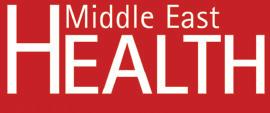
Publisher Michael Hurst Michael@MiddleEastHealth.com
Editor Callan Emery editor@MiddleEastHealth.com
Editorial Consultants
Dr Gamal Hammad, Dr Peter Moore, Harry Brewer
Middle East Editorial Office PO Box 72280, Dubai, UAE Telephone: (+9714) 391 4775 editor@MiddleEastHealth.com
Marketing Manager Foehn Sarkar Telephone: (+9714) 391 4775 n Fax: (+9714) 391 4888 marketing@MiddleEastHealth.com
Subscription & Admin Manager
Savita Kapoor Telephone: (+9714) 391 4775 n Fax: (+9714) 391 4888 Savita@MiddleEastHealth.com
Advertising Sales PO Box 72280, Dubai, UAE marketing@MiddleEastHealth.com
Americas, France
Joy Sarkar P O Box 72280, Building No.2 2nd Floor, Dubai Media City Dubai, United Arab Emirates Tel: +971 4 391 4775 Fax: +971 4 391 4888 Joy@MiddleEastHealth.com
Japan
Mr Katsuhiro Ishii
Ace Media Service Inc 12-6, 4-chome, Adachi-ku, Tokyo 121-0824, Japan Tel: +81-3-5691-3335 n Fax:+81-3-5691-3336 Email: amskatsu@dream.com
China
Miss Li Ying
Medic Time Development Ltd, Flat 1907, Tower A, Haisong Building, Tairan 9th Road, Futian District, Shenzhen, China 518048 Tel: +86-755-239 812 21 n Fax: +86-755-239 812 33 Email: medic8@medictime.com
Taiwan
Larry Wang
Olympia Global Co Ltd 7F, No.35, Sec 3, Shenyang Rd, Taichung Taiwan 40651 n P O Box: 46-283 Taichung Taiwan 40799 Tel: +886- (4)-22429845 n Fax:+886- (4)-23587689
Email: media.news@msa.hinet.net
Middle East Health is published by Hurst Advertising FZ LLC , Dubai Media City, License Number: 30309 UAE National Media Council - Approval Number: 2294781.

Middle East Health online www.MiddleEastHealth.com is printed by Masar Printing and Publishing. www.masarprint.com
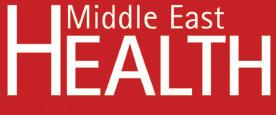

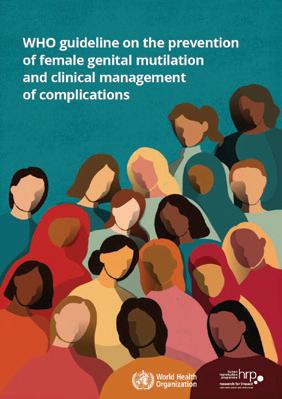
26 Capacity Building: An interview with Vivek Kanade, Managing Director Siemens Healthineers, ME&A
28 Women’s Health: Novel therapeutic target discovered for female mitochondrial cardiomyopathy
32 Women’s Health: Menstrual cycle inflammation dynamics may explain timing of sickle cell pain crises
36 Surgery: Prothrombin complex concentrate outperforms frozen plasma in managing bleeding during cardiac surgery
38 Surgery: New study reveals TCAR outperforms TF-CAS for stroke prevention in carotid artery stenosis

46 Autism: Early detection, lasting impact: Transforming autism care in the UAE

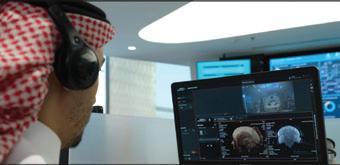

Bingxian/Flickr
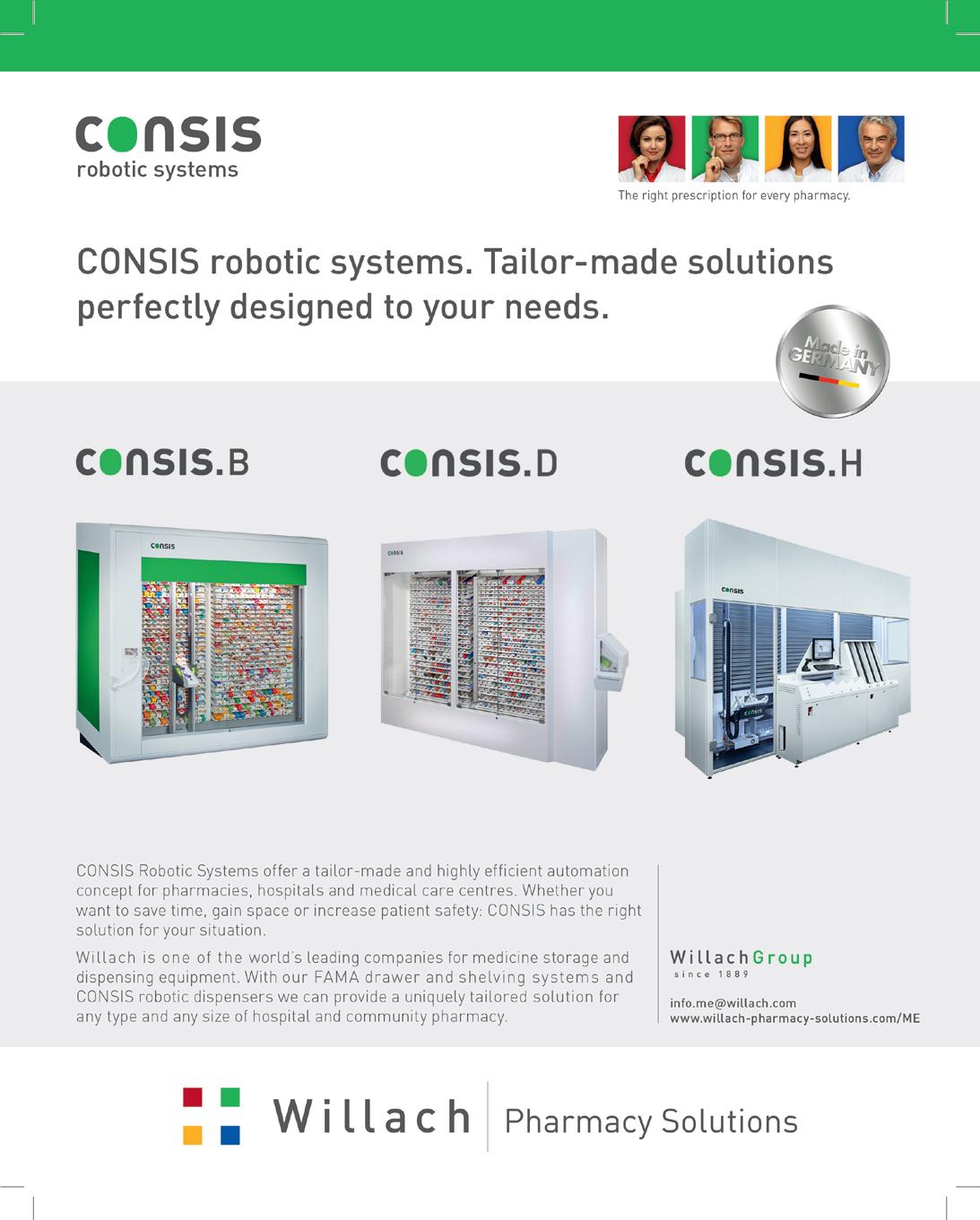

middle east monitor
Update from around the region

and Yas Clinic have secured a prestigious AABB accreditation for Haematopoietic Progenitor Cell Collection, marking them as the first healthcare institutions in the UAE and only the second in the entire Middle East and North Africa (MENA) region to receive this recognition.
Establishing regional leadership in cellular therapy
The accreditation, granted by AABB (formerly the American Association of Blood Banks), acknowledges the facilities’ adherence to rigorous quality and safety standards in the procurement, processing, and storage of haematopoietic progenitor cells. These cells are fundamental components in transplantation procedures and treatments for blood disorders and autoimmune conditions.
This achievement complements ADSCC’s existing credentials as a Centre of Excellence in Haematopoietic Stem Cell Transplantation, accredited by the Department of Health Abu Dhabi, and its accreditation by the Foundation of Accreditation for Cellular Therapy (FACT). Notably, the institution has acquired these three significant cellular therapy accreditations within a condensed 24-month period.
healthcare objectives
Prof Yendry Ventura, Chief Executive Officer of ADSCC and Adjunct Professor at United Arab Emirates University, contextualised the achievement within broader national healthcare priorities: “Under the visionary leadership of the UAE and in alignment with the national healthcare agenda, ADSCC and Yas Clinic remain dedicated to advancing cellular therapy and medical innovation on a global scale.”
He further emphasised the significance of the accreditation: “As the first institution in the UAE to receive this prestigious accreditation, we continue to set new benchmarks in quality and patient safety which is backed by a solid infrastructure, a state-of-the-art apheresis and ECP unit, and unparalleled clinical expertise.”
Clinical implications and infrastructure development
Dr Maysoon Al Karam, Chief Medical Officer at Yas Clinic operated by ADSCC, highlighted the collaborative effort behind this milestone: “This achievement reflects the efforts and expertise of our entire team of scientists, haematologists, immunologists, nurses and technicians and beyond.”
The AABB accreditation programme is
internationally recognised for establishing exceptional standards in quality and safety across the blood and biotherapies field, encompassing all aspects of transfusion medicine, biotherapies and relationship testing.
Comprehensive service model
ADSCC is the originator of the Abu Dhabi Bone Marrow Transplant (AD-BMT©) programme, which since 2020 has provided both autologous and allogeneic haematopoietic stem cells transplant services for adult and paediatric patients in the UAE.
The centre’s facilities include one of the region’s most advanced research laboratories, a state-of-the-art apheresis unit, a stem cell collection unit, a Good Manufacturing Practice (GMP) laboratory, and dedicated multi-specialty outpatient clinics and inpatient wards. This comprehensive infrastructure supports ADSCC’s holistic service model encompassing research, clinical trials, translational care, and manufacturing capabilities.
In 2024, ADSCC received FACT accreditation for its cellular therapy processing laboratory, becoming the first in UAE and one of only two facilities in the Middle East to obtain this global recognition.
• For more information about ADSCC and its services, visit: www.adscc.ae.


Siemens Healthineers completes innovation programme to boost Saudi healthcare capabilities
Siemens Healthineers has successfully concluded its Innovation Capacity Building Program in Saudi Arabia, bringing together 40 diverse healthcare professionals to develop solutions for critical healthcare challenges. The two-week initiative, conducted through the company’s Regional Headquarters in Saudi Arabia aimed to strengthen local expertise and foster strategic collaborations across the healthcare ecosystem.
Cross-disciplinary approach targets healthcare transformation
The programme focused on three primary workstreams: Disease Pathways, Healthcare Systems of the Future, and Medical Curriculum of the Future. Participants from various backgrounds – including physicians, engineers, healthcare professionals, researchers, and students – employed innovation methodologies to create data-driven, patient-centric solutions designed to optimise healthcare delivery and improve outcomes.
This collaborative approach facili-
Cleveland Clinic Abu Dhabi performs first transcontinental robotic prostate cancer procedure
Cleveland Clinic Abu Dhabi, part of the M42 group, has successfully conducted the world’s first transcontinental roboticassisted focal therapy procedure for prostate cancer. The groundbreaking procedure represents unprecedented collaboration between specialists separated by thousands of kilometres, with real-time coordination between Cleveland Clinic facilities in Abu Dhabi and Ohio.
tated cross-disciplinary synergies, enabling participants to identify critical healthcare gaps and develop innovative solutions to address them within the Kingdom’s healthcare landscape.
Strategic partnerships enhance innovation ecosystem
The programme culminated in an Outcome Exhibition on February 20, 2025, hosted at Monshaat Startup Hub in Riyadh. Monshaat, Saudi Arabia’s Small and Medium Enterprises General Authority, was selected as a strategic partner due to its significant role in fostering entrepreneurship and innovation within the Kingdom.
Dr Abdulaziz Alhomod, Head of Radiology at SEHA Virtual Hospital, Ministry of Health, endorsed the programme’s approach: “Innovation is the cornerstone of transformative healthcare. It was a great experience to join Siemens Healthineers Innovation Capacity Building Program, which reaffirms the power of innovation and collaboration in shaping future care delivery.”
Dr Alhomod further emphasised his
commitment to ongoing engagement with Siemens Healthineers to build local expertise in innovation, entrepreneurship, and commercialisation, while improving cross-institutional collaborations to address key healthcare challenges.
Comprehensive portfolio supports digital transformation
Throughout the programme, Siemens Healthineers showcased its comprehensive solutions portfolio, highlighting its innovation and scientific partnerships alongside education and capacity-building initiatives. This approach demonstrated the company’s commitment to leading positive change in the digital healthcare landscape.
The programme exemplifies Siemens Healthineers’ strategic commitment to enhancing healthcare capabilities within Saudi Arabia, leveraging global expertise while developing local talent and fostering sustainable growth in alignment with national healthcare objectives.

The innovative surgery enabled synchronous collaboration between Dr Ruben Olivares, a urologist from Cleveland Clinic’s Glickman Urological Institute in Ohio providing remote guidance, and Dr Waleed A. Hassen, Department Chair of Urology at Cleveland Clinic Abu Dhabi, who managed the procedural execution onsite.
Technical implementation
Focal therapy represents a non-invasive treatment approach that precisely targets specific prostate sections using ultrasound beams, eliminating requirements for major surgery or radiation. The Focal-One system enhances this precision through a robotic arm that delivers controlled ultrasound treatment.
Dr Hassen explained: “There are many ways to treat prostate cancer, and one of the
options is focal therapy. It’s a non-invasive procedure where we use a robotically controlled arm to deliver treatment. Once the treatment plan is in place, the machine delivers it precisely. This is proof of principle that we can contour the prostate, design the plan, and execute it remotely.”
Clinical significance
Remote procedures offer significant po-
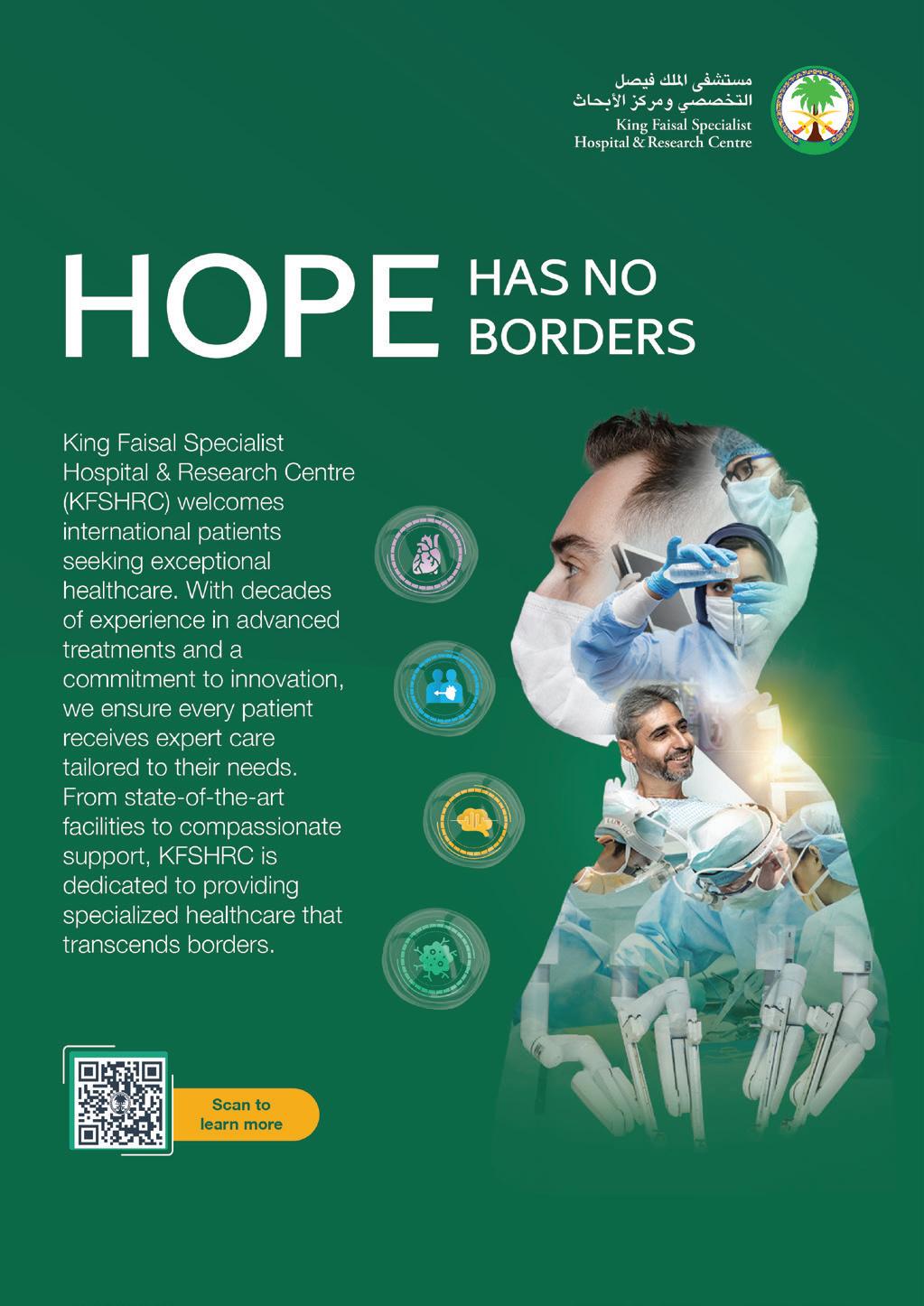

tential to address healthcare inequities by providing specialised surgical expertise to underserved regions. The technology combines local and global clinical expertise while enabling minimally invasive treatment options for patients who might otherwise lack access to advanced care.
Dr Olivares noted: “We are thrilled
Sheikh Shakhbout Medical City launches dedicated Cancer Survivorship Clinic
Sheikh Shakhbout Medical City (SSMC), a flagship hospital in the UAE for serious and complex care and a subsidiary of the PureHealth group, has established a spe cialised Survivorship Clinic focused on supporting cancer patients following com pletion of their treatment regimens.
The new service represents a signifi cant advancement in the facility’s oncol ogy care continuum, addressing the often overlooked post-treatment phase when patients must navigate the physiological and psychological aftermath of cancer therapies.
Holistic approach to post-treatment care
What distinguishes the Survivorship Clinic is its comprehensive multidisciplinary framework, bringing together specialists from oncology, internal medicine, nutrition, physiotherapy and psychology. This integrated approach enables patients to consult multiple specialists during a single visit, creating a streamlined and cohesive patient experience.
Dr Abdulqader Almessabi, chief medical officer at SSMC, emphasised the significance of this development: “The opening of our Survivorship Clinic represents a key milestone in the expansion of our specialised oncology and clinical care services. It signifies our deep commitment to supporting patients beyond treatment and adds a meaningful new dimension to our comprehensive cancer care services.”
The clinic’s multidisciplinary team conducts thorough assessments of patients’ post-treatment needs, including special-
to have successfully performed the firstever transcontinental robotic assisted focal therapy procedure for prostate cancer by working in tandem with our partners at Cleveland Clinic Abu Dhabi. Here at Cleveland Clinic, we use cutting-edge technology, but unfortunately, it’s not available in many places throughout the U.S. and in the world.”
Future applications
The successful procedure extends beyond prostate cancer treatment, potentially opening new pathways for surgical education and international clinical collaboration. The achievement coincides with Cleveland Clinic Abu Dhabi’s decade of clinical excellence and ongoing integration of advanced healthcare technologies.

risk evaluations, age-appropriate cancer screenings, psychological evaluation and interventions, and management of longterm chemotherapy side effects.
Evidence-based survivorship care
With improving cancer survival rates globally, the demand for structured survivorship care has grown substantially. Dr Aydah Al Awadhi, chair of the Haematology and Oncology Division and consultant medical oncologist at SSMC, highlighted the scientific rationale behind the new service.
“With cancer survival rates continuing to rise, the need for dedicated survivorship care has never been greater. Studies have identified important benefits of cancer survivorship programmes, including improved physical, emotional, and social well-being, better management of late and long-term treatment effects, enhanced coordination of care, and increased adherence to health maintenance,” said Dr Al Awadhi.
She added: “Our Survivorship Clinic will offer a complete evaluation, extending
ensures a truly integrated and personalised approach for each patient.”
Individualised care plans
The clinic’s protocols emphasise individualised care tailored to patients’ specific post-treatment challenges. This personalised approach recognises that cancer survivors face varied physiological, psychological and social challenges depending on their cancer type, treatment modalities, comorbidities and personal circumstances.
The establishment of the Survivorship Clinic aligns with evolving oncology practice standards that recognise cancer care as a continuum extending well beyond the active treatment phase. By addressing survivorship systematically, SSMC aims to optimise long-term outcomes and quality of life for cancer patients.
Sheikh Shakhbout Medical City in Abu Dhabi is one of the largest tertiary hospitals in the UAE with 660 patient beds, 18 operating theatres, and services across 46 medical specialties.
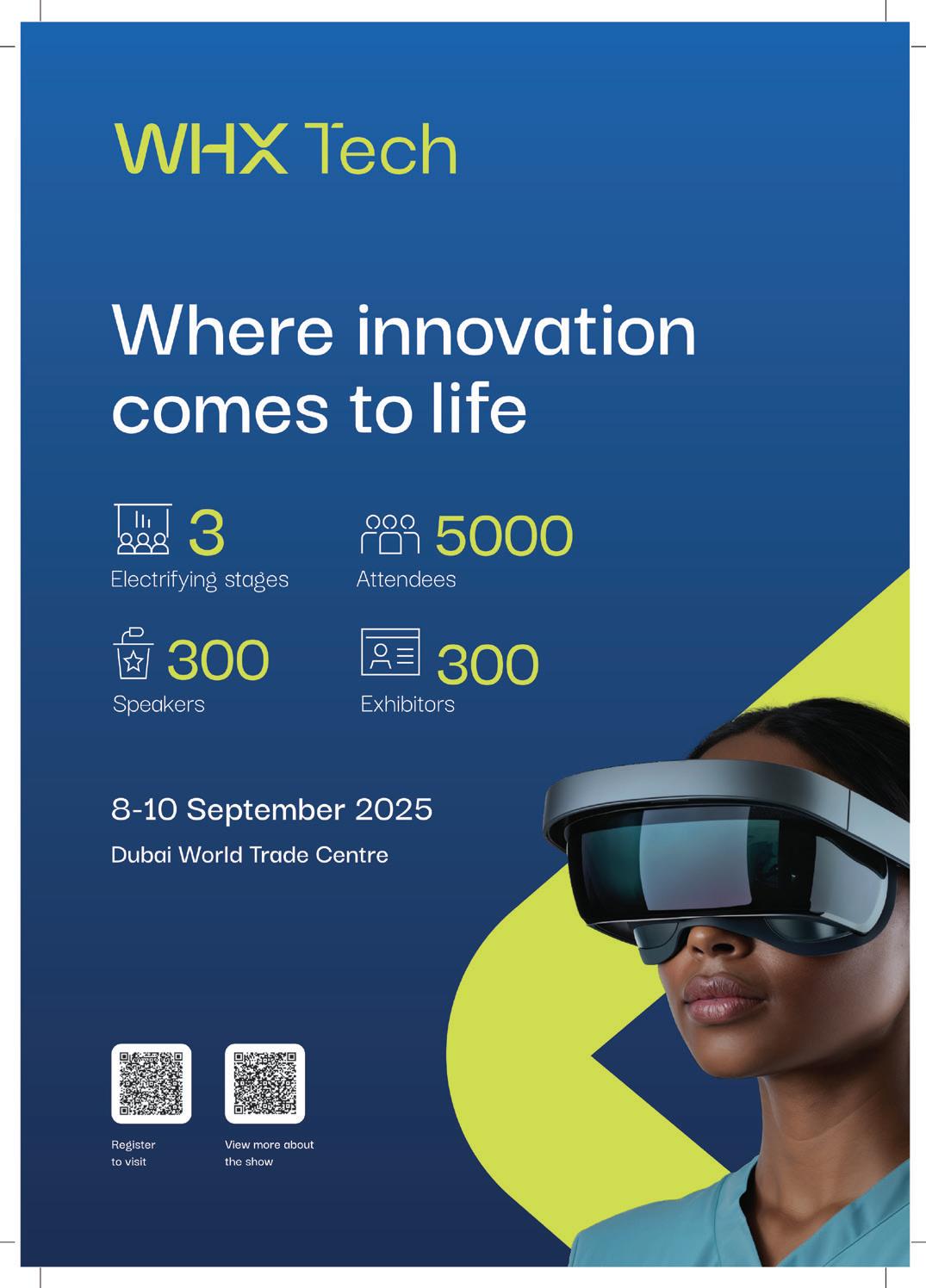

worldwide monitor
Update from around the globe
WHO issues new guidelines to combat medicalized FGM and improve survivor care
The World Health Organization (WHO) has published new comprehensive guidelines addressing the growing concern of “medicalized” female genital mutilation (FGM) and emphasizing the critical role healthcare workers must play in ending the practice.
The guidelines, titled “The prevention of female genital mutilation and clinical management of complications,” come amid alarming evidence that healthcare professionals are increasingly performing FGM procedures, with approximately 52 million girls and women – representing about 25% of cases – having undergone FGM at the hands of medical practitioners as of 2020.
“Female genital mutilation is a severe violation of girls’ rights and critically endangers their health,” said Dr Pascale Allotey, WHO’s Director for Sexual and Reproductive Health and Research, and the United Nations’ Special Programme for Human Reproduction (HRP). “The health sector has an essential role in preventing FGM – health workers must be agents for change rather than perpetrators of this harmful practice, and must also provide high quality medical care for those suffering its effects.”
Understanding the global burden of FGM FGM comprises all procedures involving partial or total removal of external female genitalia or other injury to female genital organs for non-medical reasons. Typically performed on girls between infancy and age 15, the practice has no health benefits and causes significant harm.
Current data reveals that over 230 million girls and women alive today have undergone FGM across 30 countries in Africa, the Middle East and Asia, with an estimated 4 million girls at risk annually. The economic burden is substantial, with treatment of FGM complications costing health systems approximately US$ 1.4 billion per year – a figure expected to rise without urgent intervention.
Dangers of medicalization
The new WHO guidelines specifically highlight the dangers of “medicalization” – the performance of FGM by healthcare professionals. Evidence indicates that contrary to common belief, medicalized FGM may actually pose greater risks, potentially resulting in deeper, more severe cuts.
Additionally, the involvement of healthcare workers risks legitimizing the practice, potentially undermining broader abandonment efforts. The guidelines therefore recommend establishing professional codes of conduct that explicitly prohibit health workers from performing FGM under any circumstances.
Comprehensive prevention approach
The WHO guidance emphasizes a multifaceted approach to prevention:
Professional engagement
Recognizing healthcare workers’ respected community positions, the guidelines stress the importance of positively engaging and training medical professionals as prevention advocates. Research demonstrates that health workers can serve as influential opinion leaders in changing attitudes toward FGM.
“Research shows that health workers can be influential opinion leaders in changing attitudes on FGM, and play a crucial role in its prevention,” said Christina Pallitto, Scientist at WHO and HRP who led the development of the new guideline. “Engaging doctors, nurses and midwives should be a key element in FGM prevention and response, as countries seek to end the practice and protect the health of women and girls.”
Communication strategies
The guidelines recommend sensitive communication approaches to help health workers effectively decline FGM requests while educating about its serious immediate and long-term health risks, which
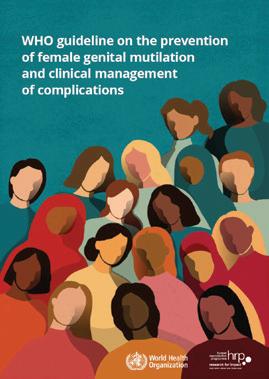
include severe pain, excessive bleeding, infections, urinary problems, and sexual difficulties, among others.
Community involvement
Beyond the healthcare sector, the guidelines emphasize community education activities that involve men and boys, which can effectively increase knowledge about FGM, promote girls’ rights, and support attitudinal change. These community-level interventions are presented as crucial complements to legal and policy frameworks.
Improving survivor care
The guidelines also include clinical recommendations to ensure high-quality medical care for FGM survivors. Given the extensive short and long-term health complications associated with FGM, survivors often require various health services throughout their lives, including mental health support, management of obstetric risks, and where appropriate, surgical repairs.
Progress is possible
Evidence demonstrates that with appropriate commitment and support, ending FGM is achievable. Countries like Burkina Faso, Sierra Leone and Ethiopia have seen significant reductions in prevalence among 15-19-year-olds over the past 30 years by as much as 50%, 35% and 30% respectively, through collective action and political commitment to enforce bans and accelerate prevention.
Since 1990, the likelihood of a girl undergoing genital mutilation has decreased threefold. However, with FGM remaining common in approximately 30 countries worldwide, sustained effort and healthcare sector engagement remain essential to ending the practice.
• The complete guidelines are available at: https://www.who.int/publications/i/ item/9789240107281

WHO tests global pandemic response through multinational Exercise Polaris
In an unprecedented demonstration of international collaboration, the World Health Organisation (WHO) has successfully completed Exercise Polaris, the first test of its new Global Health Emergency Corps (GHEC) framework. The two-day simulation, conducted in early April, brought together more than 15 countries and 20 regional health agencies to evaluate global pandemic response capabilities.
Coordinated response to simulated virus outbreak
The exercise simulated an outbreak of a fictional virus spreading across the world, with participating countries including Canada, Colombia, Costa Rica, Denmark, Ethiopia, Germany, Iraq, Kingdom of Saudi Arabia, Mozambique, Nepal, Pakistan, Qatar, Somalia, Uganda and Ukraine, while additional countries observed the proceedings. Each participating nation operated through its existing national health emergency coordination structure under reallife conditions to share information, align policies and activate response mechanisms. Regional and global partners – including Africa CDC, European CDC, IFRC, IOM, UNICEF and established emergency networks such as the Global Outbreak Alert and Response Network – provided support within the simulation framework.
WHO Director-General Dr Tedros Adhanom Ghebreyesus emphasised the exercise’s significance: “This exercise proves that when countries lead and partners connect, the world is better prepared. No country can face the next pandemic alone. Exercise Polaris shows that global cooperation is not only possible – it is essential.”
Testing trust-based international coordination
Throughout the simulation, countries maintained leadership of their individual response efforts whilst engaging with WHO for coordination, technical guidance and emergency support. The exercise created a realistic environment for governments to test preparedness where trust and mutual accountability were equally important as speed and capacity.
Dr Soha Albayat from Qatar noted: “Polaris demonstrated the critical importance of cultivating trust before a crisis occurs. The foundation of our collaborative efforts is significantly stronger than in years past. We’ve moved beyond reactive measures, and are now proactively anticipating, aligning, and coordinating our cross-border emergency response plans.”
Building on GHEC implementation framework
Exercise Polaris builds upon the Global Health Emergency Corps initiative launched in May 2023. GHEC aims to enable countries to strengthen their emergency workforce capacities, streamline coordination mechanisms during response efforts and ultimately save lives.
The framework offers three key benefits for participating nations:
First, it enables countries to assess, structure and invest in their national health emergency corps. Dr Soha AlBayat, Director of Health Emergency at Qatar’s Ministry of Public Health, explained that GHEC helps countries with robust health security systems confirm they are on the right track whilst identify-
ing workforce-related gaps, and provides a useful tool for countries building health emergency workforce capacities to secure political buy-in.
Second, GHEC outlines collaboration modalities between countries and partners, establishing pre-tested coordination mechanisms critical during emergency responses. Dr Eduardo Samo Gudo Junior, Director General of Mozambique National Institute of Health, reflected on how such coordination could have improved his country’s response to a devastating 2019 tropical cyclone and subsequent cholera outbreak by avoiding delays, minimising duplication of efforts, and better utilising resources.
Finally, the framework connects emergency health leadership at all levels for coordinated and effective responses to emerging health threats. WHO is establishing regional emergency leaders’ networks across Africa and the Eastern Mediterranean, as well as regional health emergency councils in South-East Asia and Western Pacific regions.
Dr Mike Ryan, Executive Director of WHO’s Health Emergencies Programme, concluded: “The Global Health Emergency Corps has evolved into a powerful platform, building on practice, trust and connection. Exercise Polaris showed what is possible when countries operate with urgency and unity supported by well-connected partners. It is a strong signal that we are collectively more ready than we were.”
• For more information on the Global Health Emergency Corps, visit: https://www.who.int/emergencies/ partners/global-health-emergency-corps
Global burns research project identifies top 10 priorities across 88 countries
A groundbreaking research initiative spanning 88 countries has identified the most pressing priorities in global burns care research, according to findings published today in The Lancet Global Health. The study, led by the University of Bristol, represents the largest project of its kind to determine which knowledge gaps in burns care most urgently need addressing.
Each year, more than 11 million people worldwide experience serious burns that cause life-changing injuries, affecting
both adults and children. Survivors often face lifelong disabilities, post-traumatic stress disorder, depression, anxiety, and chronic pain.
The Priorities in Global Burns Research partnership, funded by the National Institute of Health and Care Research (NIHR) and facilitated by the James Lind Alliance, sought to identify the most important knowledge gaps in burns care according to survivors, carers and healthcare professionals to guide future research.
Methodology reveals extensive international collaboration
Researchers from Bristol Medical School surveyed over 1,600 participants across six continents regarding their experiences with burns care and treatment. The study participants – comprising survivors, their families, carers and healthcare professionals –completed surveys and participated in workshops to reach consensus on the top 10 most critical unanswered research questions in global burns care.

Differences
between high and low-income settings
The project highlighted notable differences in priorities between high and lowincome countries, particularly regarding stigma, cost-effective treatments, and long-term care. However, psychological effects emerged as one of the most challenging aspects for all burns survivors regardless of geographic location.
Legacy of Professor Amber Young
The project forms part of the late Professor Amber Young’s NIHR Advanced Fellowship. Professor Young, who was based at the Bristol Centre for Surgical Research and NIHR Bristol Biomedical Research Centre, was a Consultant Paediatric Anaesthetist at University Hospitals Bristol and Weston NHS Foundation Trust who dedicated her career to improving burns care globally. She sadly passed away in September 2022 after living with Stage 4 cancer for several years.
“This project is very much Amber’s legacy, which has created a lasting impact
of offering hope to improve treatment for burn patients and improved quality of life for burns survivors – a testament to Amber’s determination, kindness and tenacity,” said Jane Blazeby, Amber’s friend, colleague and Professor of Surgery at Bristol Medical School: Population Health Sciences.
Top research priorities identified
The ten priorities address a range of issues including acute treatments, psychological impact, scar management, pain control, stigma reduction, healthcare professional education, cost-effective dressings, resource-limited settings, and long-term support.
“Despite the severity of burns, highquality research in burn care is lacking, leading to disparities in treatment and care standards,” said Suzannah Kinsella at the James Lind Alliance. “The next step is for researchers and clinicians to translate these priorities into actionable studies to enhance global burn care.”
Hollie Richards, a Senior Research Associate at NIHR Bristol BRC who coor-
dinated the partnership, added: “It’s been a privilege to collaborate with this community of burns clinicians and survivors, and I’m honoured to have completed this work for Amber. The top ten priorities represent the experiences and views of hundreds of people all over the world, and demonstrate the extent to which research needs to address the disparities, inequities and gaps in care to improve outcomes for burn survivors.”
Future direction for burns research
The findings from this extensive international collaboration will now guide future research efforts in burns care, with the aim of improving treatment outcomes and quality of life for survivors globally.
• For more information about the project, visit: www.burnsresearch.bristol.ac.uk/
• The full paper, “Top ten research priorities in global burns care: findings from the James Lind Alliance Global Burns Research Priority Setting Partnership” by H Richards et al., is published in The Lancet Global Health
Six organisations form alliance to advance paediatric heart transplantation
Leading institutions in paediatric cardiac transplantation have established a new coalition aimed at improving outcomes and longevity for children requiring heart transplants. The Pediatric Heart Transplant Alliance brings together six prominent organisations dedicated to advancing research, education and advocacy in this specialised field.
Coalition forms to address critical challenges
The alliance unites Enduring Hearts, the International Society for Heart and Lung Transplantation (ISHLT), Pediatric Heart Transplant Society (PHTS), Transplant Families, Advanced Cardiac Therapies Improving Outcomes Network (ACTION), and Additional Ventures in a collaborative effort to enhance both survival rates and quality of life for paediatric heart transplant recipients.
This strategic partnership comes as the field approaches a significant milestone –the 10,000th paediatric heart transplant
– highlighting both progress made and challenges that remain in optimising longterm outcomes for young recipients.
Research priorities and clinical objectives
The coalition aims to accelerate scientific advances across the transplantation continuum, from pre-operative care through lifelong management. By fostering multidisciplinary collaboration among nonprofit organisations, academic institutions, commercial entities and NGOs, the alliance intends to address persistent limitations in current transplantation protocols.
“It is most appropriate that this year be the launch of the first Pediatric Heart Transplant Alliance to acknowledge the tremendous breakthroughs in medical science. So much has been accomplished, but we still have tremendous work to do to give these children the greatest opportunity for longevity and quality of life,” stated Lynda Lee Smith, CEO of Enduring Hearts.
Greg Schultz, CEO of ISHLT, added: “For more than four decades, ISHLT has been at the forefront of advancing care for patients
with advanced heart disease. We are proud to join with our partners to launch the Pediatric Heart Transplant Alliance and build a future where every child who needs a heart transplant has access to innovative therapies, compassionate care, and the best possible outcomes.”
Comprehensive approach to system improvement
The alliance will focus on enhancing organ utilisation, expanding access to specialised care, and improving posttransplant management protocols. These efforts aim to address key limitations in current practice while supporting families throughout the transplantation journey.
• For further information about the Pediatric Heart Transplant Alliance and its initiatives, additional details can be found through the participating organisations’ websites: www.enduringhearts. org, www.ishlt.org, www.pediatrichearttransplantsociety.org, www.additionalventures.org , www.transplantfamilies.org , and www.actionlearningnetwork.org

Medical research news from around the world the laboratory
Physical activity reduces depression risk in adolescents, longitudinal study finds
A comprehensive Norwegian study reveals that increased physical activity during adolescence is associated with lower risk of developing depressive symptoms, particularly between ages 14-18.

Young people who maintain or increase their physical activity levels during adolescence demonstrate a reduced risk of developing depressive symptoms, according to new research published in the Journal of the American Academy of Child & Adolescent Psychiatry on 26 March 2025.
Longitudinal evidence strengthens causality claims
Researchers from the Norwegian University of Science and Technology (NTNU) conducted a large-scale longitudinal study following 873 participants from age 6 to 18 as part of the Trondheim Early Secure Study. The investigation utilised accelerometer measurements of physical activity over seven data collection points at twoyear intervals, combined with clinical interviews to assess mental health status.
“Young people who are less physically active over time have an increased risk of developing symptoms of depression,” explains Professor Silje Steinsbekk from NTNU’s Department of Psychology, who led the research team.
The findings provide compelling evi-
dence for a protective effect of physical activity against depressive symptoms, particularly during mid-to-late adolescence. Both total daily physical activity and the proportion of more intense activity were identified as protective factors.
Age-specific associations identified
The research reveals important age-related differences in the relationship between physical activity and depression. The protective effect was most pronounced between ages 14-16 and 16-18, suggesting a developmental window during which physical activity interventions might be most effective.
“Although we found that physical activity seems to protect against depression symptoms in adolescence, this did not apply to young adolescents aged 10-14,” notes Steinsbekk.
Interestingly, the researchers identified a bidirectional relationship during certain developmental periods. Between ages 10-12 and 14-16, adolescents who exhibited more depressive symptoms were subsequently more likely to become less physically active, indicating a potential negative feedback cycle.
Clinical implications for depression prevention
The study findings have significant implications for preventive mental health strategies targeting adolescents. Interventions aimed at maintaining or increasing physical activity levels from age 14 onwards may provide a protective buffer against depression, a major public health concern among this demographic.
The research found no association between sedentary time and depression symptoms, suggesting that physical activity rather than sedentary behaviour may be the more relevant target for intervention. Additionally, no sex differences were observed in the relationship between physical activity and depression risk.
This study adds to a growing body of evidence supporting physical activity as a protective factor for mental health, while providing more precise data on the developmental timing of this relationship through its robust longitudinal design and objective measurement of physical activity via accelerometry.
• Reference
Steinsbekk, S., Skoog, J., & Wichstrøm, L. (2025). Symptoms of depression, physical activity, and sedentary time: Withinperson relations from age 6 to 18 in a birth cohort. Journal of the American Academy of Child & Adolescent Psychiatry. https://doi.org/10.1016/j.jaac.2025.03.018

Grasping movements could offer simpler autism diagnosis path, finds new study
Researchers from York University and the University of Haifa have demonstrated that machine learning analysis of naturalistic hand movements during simple grasping tasks can classify autism with approximately 85 percent accuracy. This breakthrough suggests that subtle motor differences could provide valuable diagnostic markers for autism spectrum disorder, potentially enabling earlier intervention and improved outcomes.
New diagnostic approach leverages motor markers in autism
A groundbreaking study published in the journal Autism Research on May 5, 2025, has identified a potentially simpler approach to diagnosing autism spectrum disorder through the analysis of hand movements during everyday grasping tasks.
The international research team, led by Associate Professor Erez Freud from York University’s Department of Psychology and the Centre for Vision Research, used machine learning to analyse naturalistic finger movements during grasping in autistic and non-autistic young adults.
“Our models were able to classify autism with approximately 85 per cent accuracy, suggesting this approach could potentially offer simpler, scalable tools for diagnosis,” says Freud.
Motor abnormalities provide early diagnostic opportunity Autism spectrum disorder affects approximately one in 50 Canadian children and is typically diagnosed through behavioural assessments that focus on social communication challenges and repetitive behaviours. However, these characteristic markers often appear relatively late in development.
The research team notes that motor abnormalities, which are widely documented in autism, frequently manifest in early childhood and could potentially provide earlier diagnostic signals – something not yet widely leveraged in clinical practice.
“The main behaviours markers for diagnosis are focused on those with relatively late onset and the motor markers that can be captured very early in childhood may thus lower age of diagnosis,” explains Professor Batsheva Hadad of the University of Haifa, a key collaborator in the study.
Study methodology focused on natural movements
The researchers recruited 31 autistic and 28 non-autistic young adults with normal IQ scores. Participants were asked to perform a simple grasping task – using their thumbs and index fingers to grasp, lift, and replace blocks of varying sizes while tracking markers attached to their fingers captured precise movement data.
By focusing on young adults rather than children, the researchers ensured that any differences observed could not be attributed to developmental delays but instead reflected fundamental differences in motor control.
The research team used five different machine learning classifiers to analyse the data, achieving consistent classification accuracy above 84% across all models. When examining the area under the curve (AUC) – a measure of classification reliability –they achieved scores above 0.95 at the subject-wise analysis and above 0.85 at the trial-wise analysis.
Classification possible with minimal features
One particularly promising finding was that the classifiers maintained high accuracy even when using a reduced set of features. With just eight carefully se-
lected, minimally-correlated features spanning multiple domains – including experimental condition, timing information, velocity data, and location information – the classifiers achieved 82-86% accuracy.
“These findings suggest that subtle motor control differences can be effectively captured, offering a promising approach for developing accessible and reliable diagnostic tools for autism,” note the authors in their paper.
Implications for earlier diagnosis and intervention
The authors highlight the potential clinical significance of their work in the paper’s conclusion: “The current study provides strong evidence that grasping movements are strongly diagnostic of autism, and that ML techniques can be utilized to enhance the robustness of such diagnosis. By focusing on naturalistic tasks and minimal data inputs, our approach offers a promising avenue for developing objective, accessible, simple, and reliable diagnostic tools for autism based on motor control features.”
This approach could complement existing diagnostic methods and potentially enable earlier intervention, which is known to improve outcomes for autistic individuals. The researchers suggest that further studies should explore whether similar kinematic markers can be observed in younger populations, particularly in early childhood when the visuomotor system is still developing.
Reference: Freud, E., Ahmad, Z., Shelef, E., et. al. (2025). Effective autism classification through grasping kinematics. Autism Research, 0(0), 1-12. https://doi.org/10.1002/aur.70049

Food as medicine: High-fibre diet proves superior to FMT in restoring gut health after antibiotics
New research from the University of Chicago shows that diet is more influential than faecal microbiota transplant (FMT) in helping the gut microbiome recover following antibiotic treatment. Mice fed a Mediterranean-style diet rich in plant fibres quickly restored a healthy, diverse gut microbiome, while those on a Western diet remained susceptible to infection – even when treated with FMT – challenging established approaches to microbiome recovery.
Diet quality trumps microbial reseeding in recovery
In a significant challenge to current therapeutic approaches for gut dysbiosis, a comprehensive study published in Nature demonstrates that diet plays a more fundamental role in microbiome recovery after antibiotic treatment than previously understood.
The research team, led by Megan Kennedy and Eugene B. Chang from the University of Chicago, showed that mice fed a high-fibre, plant-based diet (similar to a Mediterranean diet) recovered their gut microbiome diversity rapidly after antibiotic treatment, while those on a typical Western diet – high in processed foods, red meat, dairy and sugar – were unable to rebuild a healthy microbiome despite microbial intervention attempts.
“We were really surprised by how dramatically different the recovery process is in the mice on the Western-style diet versus the healthier one,” said Kennedy, lead author of the study.
The forest fire analogy
The researchers liken the antibiotic destruction of gut bacteria to a forest fire, with natural principles of ecology applying to the rebuilding process.
“The mammalian gut microbiome is like a forest, and when you damage it, it must have a succession of events that
occur in a specific order to restore itself back to its former health,” explains Chang.
“When you are on a Western diet, this does not happen because it doesn’t provide the nutrients for the right microbes at the right time to recover. Instead, you end up with a few species that monopolize these resources, and don’t set the stage for other organisms that are required for recovery.”
Complex carbohydrates drive recovery through syntrophy
Using metabolic modelling, the researchers discovered that mice fed a diet rich in plant fibres were able to develop what they termed “syntrophic cross-feeding interactions” – where diverse bacterial species work cooperatively, breaking down complex carbohydrates and producing metabolites that feed other beneficial bacteria.
In contrast, mice on the Western diet showed almost complete loss of these syntrophic interactions after antibiotic treatment. Their gut became dominated by a single bacterial species with broad metabolic capacity that monopolized the available simple sugars without producing the metabolic byproducts needed to feed other bacteria.
The researchers note in their paper: “Our data challenge widespread enthusiasm for faecal microbiota transplant (FMT) as a strategy to address dysbiosis, and demonstrate that specific dietary interventions
are, at a minimum, an essential prerequisite for effective FMT, and may afford a safer, more natural and less invasive alternative.”
Increased infection risk with prolonged dysbiosis
The implications extend beyond microbiome diversity to gut health and infection susceptibility. The team found that mice on the Western diet with prolonged microbiome dysbiosis were significantly more susceptible to Salmonella infection 14 days after antibiotic treatment, suggesting that dietary conditions can extend the window of infection vulnerability.
“Maybe we can use diet to rebuild the commensal microbes that have been suppressed under these therapies. We can restore the healthy microbiome much quicker and prevent the emergence of more multidrug-resistant organisms,” said Chang.
This research has significant clinical relevance, particularly for patients on antibiotics or immunosuppressants following cancer treatment or organ transplants, who are vulnerable to infections with multidrug-resistant bacteria.
The researchers suggest that peri-antibiotic dietary interventions could be a safe, affordable approach to promote microbiome recovery when iatrogenic damage is unavoidable.
Reference: Kennedy, M. S., Freiburger, A., Cooper, M., et. al. (2025). Diet outperforms microbial transplant to drive microbiome recovery in mice. Nature https://doi.org/10.1038/s41586-025-08937-9
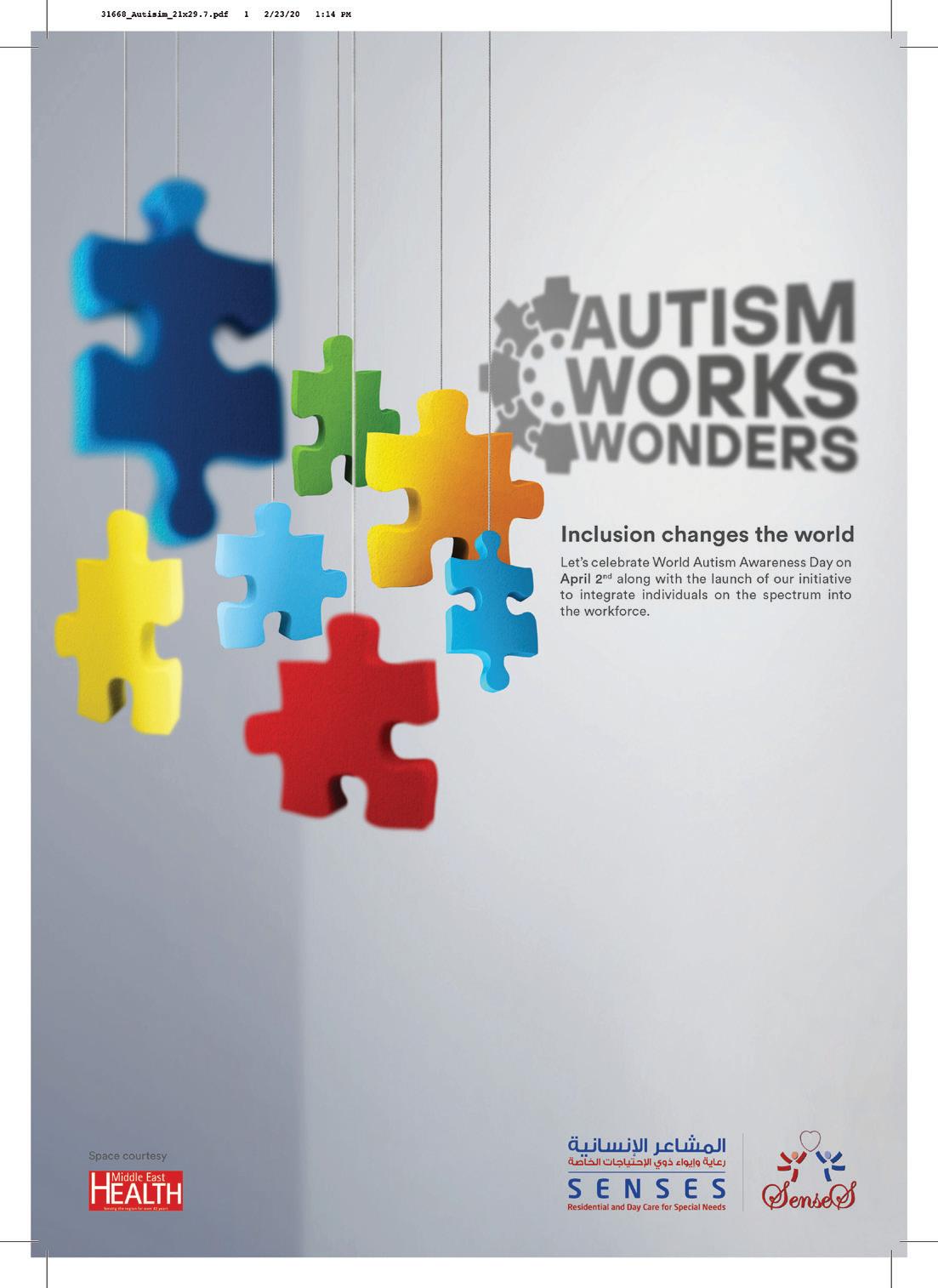
Online diabetes self-management programmes help lower blood sugar levels
Virtual diabetes self-management interventions have demonstrated significant effectiveness in reducing blood sugar markers among participants with Type 2 diabetes, according to new research from Texas A&M University. The study found that structured education, smartphone applications, and combined approaches all yielded substantial improvements in haemoglobin A1c levels that persisted over a six-month period, regardless of delivery method.
Study evaluates virtual diabetes management approaches
Researchers from Texas A&M University’s School of Public Health have found compelling evidence that online diabetes self-management programmes can help people with Type 2 diabetes significantly improve their blood sugar control. The study, published in the journal Frontiers in Public Health, evaluated three different virtual intervention approaches and found all were effective at reducing haemoglobin A1c levels – the primary marker used to diagnose and monitor diabetes.
Led by Professor Marcia Ory, the research team conducted a randomised controlled trial involving 189 adults with unmanaged Type 2 diabetes from both rural and urban areas across Texas. All participants had baseline A1c levels of 7.5 or higher at the start of the study.
“There are many self-management interventions for people living with Type 2 diabetes, but until now little research has been conducted on their effectiveness based on how they are delivered or when they are used in combination,” said Ory, Regents and Distinguished Professor with the Texas A&M School of Public Health and the Center for Community Health and Aging.
Three intervention approaches tested
The researchers compared three different intervention modalities:
The first was a structured virtual education programme with one-on-one counselling, providing 6-8 hours of asynchronous training alongside personalised sessions with registered nurses or dietitians.
The second intervention utilised a smartphone application offering diabetes self-care skills and access to a diabetes coach for personalised support.
The third approach combined both methods sequentially, adding app access to the virtual education programme.
Participants used their assigned intervention for three months, with A1c measurements taken at baseline, three months, and six months. The research team conducted an intent-to-treat analysis to evaluate the effectiveness of each approach.
Long-lasting benefits observed
The study revealed that all three intervention types successfully reduced participants’ A1c values, with no significant differences between the approaches. More importantly, the researchers found that these improvements remained stable over time.
“In contrast to other studies, however, our longitudinal analyses found that A1c levels remained lower over time, suggesting that providing self-paced training and skill development could have a lasting impact, despite the particular virtual delivery mode,” Ory noted.
The research also revealed some interesting demographic patterns. Older adults tended to experience larger reductions in
A1c values compared to younger participants, and those with better baseline health generally achieved more positive outcomes.
Participant retention was remarkably high, with about 90% of subjects remaining in the study for the full six months. Professor Matthew Lee Smith, one of the study’s key researchers, suggested this could be attributed to “efforts to make the programmes adaptable and to foster engagement through interactive learning programmes.”
Implications for diabetes management
The researchers suggest that relatively inexpensive and accessible self-management interventions could help address this growing public health challenge.
While acknowledging limitations in their sample – participants were English speakers with digital technology access living in Texas – the researchers believe their findings have broader applicability.
“We expect that many people with unmanaged Type 2 diabetes – including those from underrepresented groups or who have less access to health care – could experience similar benefits,” Ory said.
The study offers encouraging evidence that virtual diabetes self-management programmes can effectively improve blood sugar control, potentially reducing the risk of serious diabetes-related complications including heart disease, stroke, kidney failure, and blindness.
Reference: Ory, M., Han, G., Smith, M. L., Towne, S., Carpenter, K., & Nsobundu, C. (2025). Comparative effectiveness of diabetes selfmanagement education and support intervention strategies among adults with type 2 diabetes in Texas. Frontiers in Public Health https://doi.org/10.3389/fpubh.2025.1543298
Meets the highest hospital demands: CARDIOVIT FT-2
CARDIOVIT FT-2, SCHILLER’s mobile 12lead electrocardiograph with an optional thermal printer, is designed for the hospital environment. The device has a highly hygienic 15” multi-touch display, advanced cybersecurity and extensive connectivity features.
The seamless surface of the large touchscreen is easy to clean. No keyboard is necessary to operate the device. All cables are neatly stowed away in the trolley.
Advanced cybersecurity features
The CARDIOVIT FT-2 includes a security-hardened Linux kernel to minimize the risk in case of cyberattacks. Wi-Fi protocols including certificate-based authentication ensure secure access to the hospital IT infrastructure. To prevent unauthorized access, the device enables configurable access control with username, password, and privileges.
Extensive connectivity
Bidirectional communication for easy data access via worklist or PDQ, and fast transmission of all reports to EMR/HIS systems.
High-end diagnostic tools
The CARDIOVIT FT-2 diagnostic tools at a glance:
• Resting ECG with the SCHILLER ECG interpretation algorithm ETM
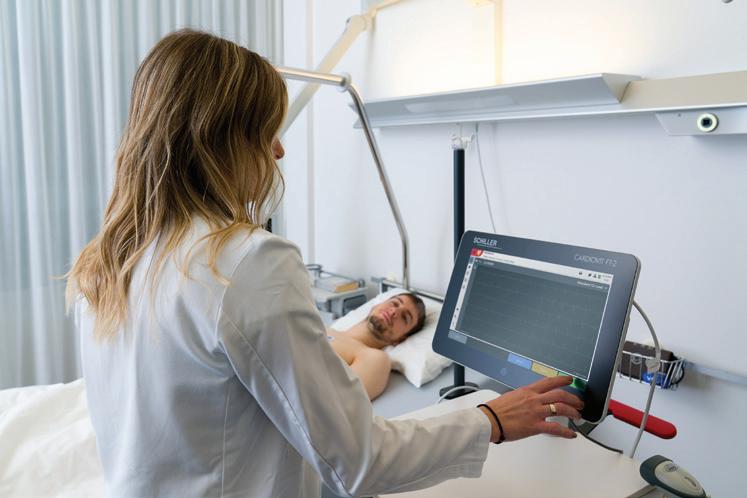
CARDIOVIT FT-2 fulfils the highest hospital demands thanks to its highly hygienic 15” multi-touch display, advanced cybersecurity and extensive connectivity features.
including ETM Sport, the automatic interpretation for athletes
• Resting rhythm recording up to 20 minutes
• Spirometry, based on the ultrasound technology of the SpiroScout SP plus (optional)
Customizable
The CARDIOVIT FT-2 provides an optional thermal printer, allowing to choose the best configuration for paperbased or paperless hospital workflow.
Add spirometry to your CARDIOVIT FT-2
With the SpiroScout SP plus (optional), the CARDIOVIT FT-2 also becomes a spirometer. Thanks to GANSHORN’s ultrasound technology, spirometry recordings are highly accurate, and the sensor is maintenance- and calibration-free.
The spirometry option offers FVC, SVC and MVV with a large selection of reference standards, pre and post tests, as well as interpretation of the FVC results. The device provides feedback on the procedure’s quality during the test and after each trial. An incentive screen is included for trials with children.

CARDIOVIT FT-2 with optional thermal printer and SpiroScout SP plus.
• Visit www.schiller.ch to discover details on the SCHILLER ECG devices and contact sales@schiller.ch for more information.
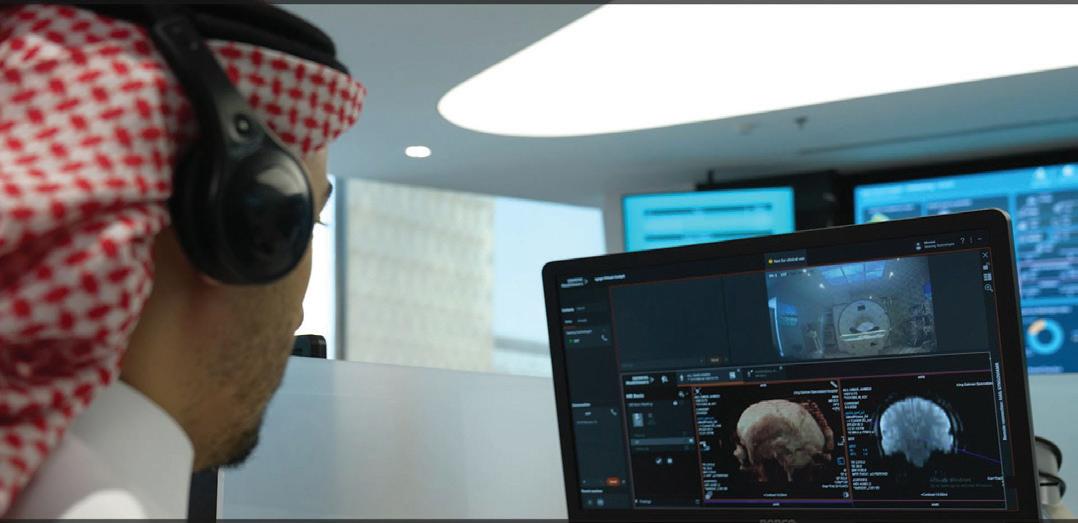
Innovative healthcare strategies: Enhancing local capabilities to bridge local gaps in healthcare infrastructure
In this exclusive interview, Middle East Health speaks to Vivek Kanade , Managing Director Siemens Healthineers, Middle East and Africa. Kanade discusses innovative approaches to bridging healthcare infrastructure gaps across the region through technological advancements, strategic local partnerships and sustainable capacitybuilding initiatives. He highlights how remote radiology, AI integration and educational programmes are addressing critical challenges in healthcare accessibility and shortages of healthcare professionals.
Middle East Health: Mr. Kanade, can you explain what are the key gaps in healthcare infrastructure across the Middle East?
The Middle East boasts a rich history and diverse culture. In recent years, there have been significant improvements in the healthcare infrastructure, especially across the more developed countries. However, there are still notable gaps that need attention and action.
One of the most critical gaps in the healthcare infrastructure in the Middle East is the uneven distribution of access to medical facilities or services. Urban areas tend to have better healthcare services, while rural regions often lack access to essential medical care. Enhancing local
capabilities and training more specialists would greatly benefit the region.
Another major gap which presents itself even on a global scale is the shortage of qualified healthcare professionals, including technicians, radiologists but also doctors and nurses. This shortage can lead to long waiting times, overworked staff, and ultimately, a decline in the quality of care provided. Addressing this issue requires investment in medical education and training programs to produce a steady supply of skilled professionals.

tools. However, investment in these technologies varies widely across the Middle East. Investing in modern healthcare technology is essential for improving patient outcomes and streamlining processes.
MEH: Which innovative solutions are helping local and regional healthcare providers to close these gaps and increase access to healthcare?
Technological advancements play a crucial role in modern healthcare, from electronic health records (EHR) to telemedicine and advanced diagnostic
Remote radiology and Artificial Intelligence (AI) are transforming the healthcare industry in profound ways, particularly in addressing the critical issues of workload and staff shortages in the radiology sector. The integration of these technologies
Siemens Healthineers’ Syngo Virtual Cockpit for teleradiology
Siemens
not only enhances efficiency but also improves the quality of patient care.
Remote radiology, or teleradiology, allows radiologists to analyze medical images from any location, at any time. This flexibility is crucial in managing the high volume of diagnostic imaging required in modern healthcare. By enabling radiologists to work remotely, healthcare facilities can ensure continuous coverage, reducing the burden on in-house staff and mitigating the shortage of qualified radiologists.
AI algorithms are designed to assist radiologists by pre-screening images and identifying potential areas of concern. This preliminary analysis can significantly reduce the time radiologists spend on each case, allowing them to focus on more complex diagnostics and patient interactions. AI can also help in prioritizing cases based on urgency, ensuring that critical cases receive immediate attention.
In conclusion, the combination of remote radiology solutions and AI not only alleviates the workload of radiologists, but also addresses the shortage of qualified staff, ultimately leading to better patient outcomes and enhanced healthcare services.
MEH: How do you foster and leverage local and regional partnerships to address these issues?
We at Siemens Healthineers believe that local and regional partnerships are pivotal and the only sustainable way of consecutively improving local healthcare infrastructures. For this purpose, we have established supporting facilities in the Middle East:
1. In June 2024, we opened doors to our new Regional Headquarter in Riyadh, Saudi Arabia, which serves as Centre of Excellence for Digitalization & Automation, Innovation & Scientific Partnerships and Customer Services.
2. Our Innovation & Scientific Partnership is the collaboration ecosystem supporting the Innovation Capacity Building Program with over 2,400 partners across the globe, focusing on addressing local and regional key healthcare challenges.
3. In February 2023, we expanded and opened new premises of our established Siemens Healthineers Academy in Egypt, which keeps delivering to our objective of addressing the shortage of medical skills and access to care in North Africa and the Middle East.
Let me give you a three few examples of our partnerships in the Middle East addressing the gaps in healthcare infrastructures:
a) Women’s Health Program in Egypt: At the heart of this initiative in partnership with the Ministry of Health in Egypt and in alignment with the Egyptian Presidential Women’s Health Initiative launched in 2020 is the deployment of 90 mammography systems including eight mobile trucks, enhancing daily screening and diagnostics alongside provision of health education, breast cancer screening, and treatment across the nation. Another crucial part of this joint initiative supported by Siemens Healthineers Academy in Egypt is the extensive educational program tailored to the MOHP’s requirements, dedicated to enhancing the skills and knowledge of healthcare professionals.
b) Unification of patient data: Dubai Health Authority in the UAE is using Siemens Healthineers imaging and reporting solution syngo.Carbon in combination with their own NABIDH platform, to centralize and host crosshospital medical records and images in one place, providing access to physicians across 60 medical institutions. This unification of patient data marks a leap forward in the accessibility of healthcare and free selection of providers across Dubai.
c) Remote scanning at Virtual Hospital Saudi Arabia: After implementation of Syngo Virtual Cockpit, experienced technologist located in the virtual hospital in Riyadh can operate CT, MRI and PET scanners at remote sites centrally. Multiple diagnostic imaging systems have been installed which are located more than 1,000 KM away from Riyadh while being operated from the virtual hospital. This solution helps the Ministry of Health to deal with the challenge of shortage of experienced staff in certain healthcare facilities and remote areas, standardize image quality, and train new staff at remote sites.
MEH: How does Siemens Healthineers implement sustainability into their objectives and business strategy?
Sustainability sits at the very core
of our company’s purpose. We want to advance a world where breakthroughs in healthcare create new possibilities with a minimal impact on our planet. Therefore, our company’s sustainability strategy is built on three pillars: We commit to improving healthcare access for all, we aim to limit our environmental impact with the products and solutions we offer, and we engage our diverse workforce to achieve this impact on a global scale.
We focus heavily on supporting the healthcare industry to foster local capacity building and create a sustainable domestic healthcare infrastructure. Through public and private partnerships, we are sharing our knowledgebase, connecting governmental entities with educational institutions and private businesses to create an innovative environment that helps close the structural gaps and address the shortage of qualified staff for healthcare organizations.
As a third pillar, and extremely important in our region, is the implementation and maintenance of a diverse and engaged workforce, leveraging different strengths and backgrounds to achieve our joint objective to advance a world where breakthroughs in healthcare create new possibilities with minimal impact on our planet.
MEH: In closing, is there anything you would like to add?
As a key player in the healthcare sector of a diverse region, we are continuously maximizing our efforts to close the identified gaps in healthcare infrastructures while being the best possible counterpart to our local partners. We do so by honouring our legacy as an innovator and by quickly adapting to new technologies, while focusing on our footprint, both ecologically, but also with regards to our contribution to local capacity building, putting us in a unique position to positively impact the development of sustainable structures together with our local partners. As our purpose statement defines: “We pioneer breakthroughs in healthcare. For everyone. Everywhere. Sustainably.”
This is why we give our best every day, to improve the lives of patients and their families.
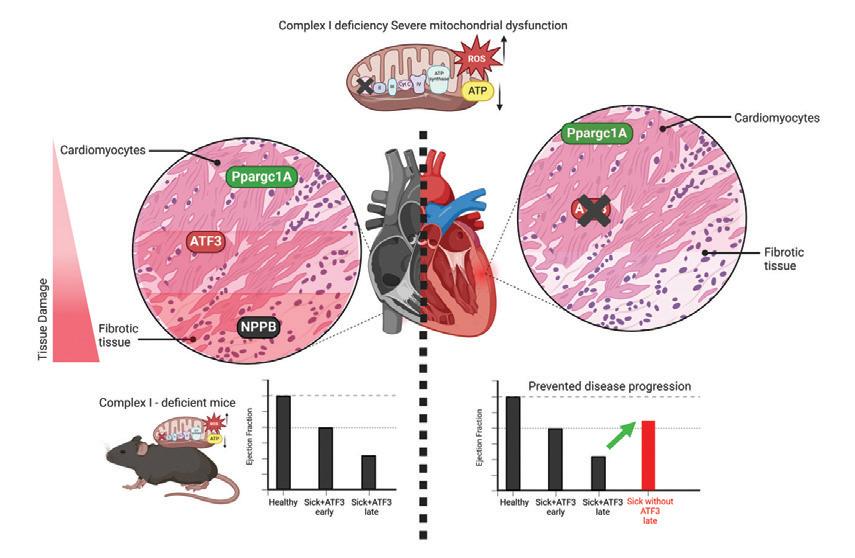
Novel therapeutic target discovered for female mitochondrial cardiomyopathy
Japanese researchers have identified a crucial molecular mechanism in mitochondrial cardiomyopathy that could transform early diagnosis and treatment options for this devastating condition. Using advanced spatial and single-cell transcriptomics, scientists from the National Cerebral and Cardiovascular Center have revealed that the ATF3 transcription factor acts as a molecular switch driving disease progression, with particularly significant implications for female patients.
Mitochondrial diseases (MD) remain one of the most challenging clinical conditions, affecting approximately 1 in 4000 individuals globally. These disorders, caused by mutations in either mitochondrial DNA or nuclear genes affecting mitochondrial
function, often go undiagnosed until severe tissue failure occurs, and current treatments fail to halt disease progression.
Now, for the first time, researchers have identified a critical molecular transition in mitochondrial cardiomyopathy (MCM) that could revolutionise both early diagnosis and treatment strategies. The groundbreaking study, published in Science Advances on 4 April 2025, used cutting-edge single-cell and spatial transcriptomics to uncover a previously unknown disease mechanism.
Atf3 deletion in MCM mice prevented disease progression
“Tissues obtained from MCM patient provided a unique opportunity to study disease progression,” explained lead author Tasneem Qaqorh. “We observed remarkable cellular heterogeneity in late-stage heart failure tissue – some cardiomyocytes remained intact while others were extensively damaged. This suggested an unsynchronized transition, prompting us to investigate molecular patterns using spatial transcriptomics.”
The role of ATF3 in disease transition
The research team’s analysis revealed a striking gene expression shift: the transcription factor ATF3 was upregulated in mildly affected regions of heart tissue but declined as damage progressed. This pattern inversely correlated with the expression of natriuretic peptide B (NPPB), a well-established marker of heart failure.
Further investigation using single-cell trajectory analysis confirmed a dynamic transition from ATF3-high to NPPB-high cardiomyocytes, marking a critical point in disease onset. This finding was particularly significant as it suggested ATF3 might be functioning as a molecular switch that drives the progression from compensation to dysfunction in cardiomyocytes affected by mitochondrial defects.
To validate their findings, the team used an Ndufs6 knockdown mouse model of MCM with slower disease progression. Despite the differing genetic mutations between the patient and mouse model, the same ATF3-driven transition was observed, suggesting this mechanism may be conserved across different types of mitochondrial cardiomyopathy.
Sex-specific effects and therapeutic potential
One of the most intriguing discoveries was that CRISPR/Cas9-mediated ATF3 knockout in female mice preserved heart function under metabolic stress, while male mice showed no improvement. This suggests a
sex-specific role for ATF3 in disease progression.
Senior author Yasunori Shintani commented: “Our findings suggest that ATF3 acts as a molecular switch, driving cardiomyocyte transition and ultimately disease progression. Targeting this pathway may offer new avenues for early intervention in mitochondrial cardiomyopathy, especially for female patients.”
The authors further explain in their paper: “The gender-specific protective effect of Atf3 knockout in FS6KD mice, observed exclusively in female mice and absent in males... suggests that the gender-specific protective effect of Atf3 knockout depends on the downstream response to complex I deficiency.”
Mechanistic insights
Through their extensive molecular analyses, the researchers identified that ATF3 appears to suppress Peroxisome proliferator-activated receptor gamma coactivator 1-alpha (PPARGC1A) – a critical compensatory factor essential for mitochondrial biogenesis and function.
Epigenomic analysis identified an ATF3 binding motif on the PPARGC1A locus, suggesting that ATF3 directly suppresses early compensatory mechanisms that would otherwise help maintain mitochondrial health. This suppression appears to trigger the transition from compensation to dysfunction in cardiomyocytes.
The study also revealed that the integrated stress response (ISR) activation followed ATF3 induction, rather than preceding it. This challenges the current understanding of stress response pathways in mitochondrial diseases, where ISR has typically been considered the primary driver of disease progression.
Implications for diagnosis and treatment
With no current cures for mitochondrial diseases, this study provides crucial in-
sights that could lead to transformative therapeutic strategies. By identifying ATF3 as a key regulator of disease progression, researchers have uncovered a potential early biomarker and therapeutic target.
The authors note in their paper: “The heterogeneous nature of the myocardium of the patient with MCM and spatially resolved transcriptomics enabled us to observe an ongoing transition process within the cardiomyocytes, which further suggests a broader therapeutic intervention window than initially conceived.”
This expanded window for therapeutic intervention could be critical for patients with mitochondrial cardiomyopathy, potentially allowing for earlier diagnosis and treatment before irreversible damage occurs.
Future research will focus on testing ATF3 inhibition in other metabolic disorders and exploring its broader implications in mitochondrial dysfunction. The team also plans to investigate the upstream factors governing ATF3 induction in MCM, which could reveal additional therapeutic targets.
Advancing precision medicine
This research represents a significant step towards precision medicine for mitochondrial diseases. By identifying sex-specific disease mechanisms, it opens the door to more targeted and effective treatments based on individual patient characteristics.
As the authors conclude in their paper: “This study reveals that Atf3 plays a crucial role in orchestrating the shift of cardiomyocytes from compensation to maladaptation. Although further research is essential, these findings offer a previously unidentified insight into how stress responses and adaptations operate in MDs.”
With continued research in this area, patients with mitochondrial cardiomyopathy may soon benefit from earlier diagnosis and more effective, targeted treatments that could substantially improve outcomes and quality of life.
Reference:
Qaqorh, T., Takahashi, Y., Sameshima, K., et. al. (2025). Atf3 controls transitioning in female mitochondrial cardiomyopathy as identified by spatial and single-cell transcriptomics. Science Advances, 11, eadq1575. https://doi.org/10.1126/sciadv.adq1575
Sidra Medicine
Empowering families through Sidra Medicine’s fertility services

emotional, social, and cultural. At Sidra Medicine, we recognize that fertility care must reflect this complexity. It does not begin with procedures but rather with empathy and understanding.
Sidra Medicine offers a model of care that is both comprehensive and uniquely tailored to each patient. We have embedded our fertility services within the wider framework of women’s health, treating conditions like polycystic ovary syndrome, endometriosis, fibroids, and diminished ovarian reserve as integral aspects of a woman’s overall health and well-being. By optimizing health before conception, we offer women not only improved success rates but also greater autonomy and informed choices throughout their reproductive journey.
In vitro fertilization services
Since the launch of our in vitro fertilization (IVF) services, Sidra Medicine has achieved milestones that set us apart. Our success rates consistently rank in the top ten percent when benchmarked against United Kingdom and United States national

standards. More than just numbers, these achievements reflect our commitment to excellence, innovation, and compassionate care. We are proud to offer some of the most advanced technologies in the field. From preimplantation genetic testing that screens embryos for inherited conditions, to fertility preservation options for patients facing cancer treatments, and advanced diagnostics for male infertility, our services are designed to meet the highest international standards.
Always innovating
Innovation powers our work. Time-lapse embryo imaging allows our specialists to monitor embryo development continuously and noninvasively, while electronic witness systems ensure the utmost safety and accuracy in the laboratory. Our commitment to innovation is also evident in our dedication to safe, evidence-based practices such as single embryo transfer, which prioritizes the health of both mother and baby by reducing the risks associated with multiple pregnancies.
Sidra Medicine is also helping shape the future of fertility care in the Middle East. In 2024, we proudly hosted the 31st Annual Scientific Meeting of the Middle East Fertility Society (MEFS) in Doha, a landmark event that brought global experts together, sparking critical conversations about fertility challenges in the Middle East. Sidra Medicine’s
innovative research also earned global acclaim, winning the prestigious ‘Samir Abbas Best Research Award’ at MEFS 2024. These milestones reflect Sidra Medicine’s broader mission: to support Qatar’s National Health Strategy by offering world-class centres of excellence that meet the evolving needs of our community. Today, families no longer need to travel abroad in search of top-tier fertility treatment. They can find hope, healing, and excellence here at home.
Patient-centred care
Yet what truly sets Sidra Medicine apart is the human dimension of our care. We understand that every fertility journey is different, medically, emotionally, and culturally. Our patient-centric philosophy ensures that treatment plans are not only clinically sound but also deeply respectful of each individual’s values and circumstances. Our multidisciplinary teams, comprised of reproductive endocrinologists, minimally invasive surgeons, genetic counsellors, embryologists, and mental health professionals, work together to support our patients at every step of their journey. Privacy, dignity, and emotional warmth are at the heart of everything we do.
Fertility care is about more than starting a family. It is about restoring confidence, honouring choice, and helping people build the future of their dreams. At Sidra Medicine, this mission inspires us every single day.

Menstrual cycle inflammation dynamics may explain timing of sickle cell pain crises
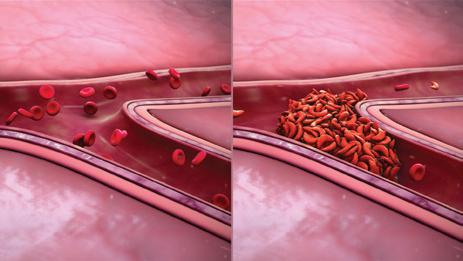
Women with sickle cell disease experience significant inflammatory marker fluctuations throughout their menstrual cycle, with C-reactive protein levels more than ten times higher during the follicular phase compared to the luteal phase, according to new research published in Blood Vessels, Thrombosis & Hemostasis. This finding provides critical insight into the long-reported phenomenon of menstrual cycle-related pain crises in female sickle cell patients.
A groundbreaking study has identified a potential biological mechanism behind the observation that women with sickle cell disease (SCD) often experience painful vasoocclusive events (VOEs) clustered around their menstrual periods. The research, led by investigators at the University of Pennsylvania, has documented significant cyclical variation in C-reactive protein (CRP) –a key inflammatory marker associated with VOE risk – across the menstrual cycle in women with SCD.
Inflammatory patterns mirror clinical observations
The study conducted by Dr Jessica Wu and colleagues analysed plasma samples from 31 individuals with confirmed SCD, including 13 female and 18 male patients. The researchers measured CRP in all samples and female sex hormones in samples from female patients to determine menstrual cycle phase at the time of collection.
While no significant differences in median CRP levels were observed between male and female participants overall (4.45 vs 3.88 mg/L, p=0.89), a striking pattern emerged when comparing samples from women in different phases of their menstrual cycle. CRP levels were significantly higher during the follicular phase compared to the luteal phase (8.80 vs 0.82 mg/L, p=0.03).
“The amount of inflammation is significantly elevated in the follicular phase, or first half, of the menstrual cycle in female patients with SCD,” said Dr Wu. “This ob-
servation correlates with what we see in the literature, that this is the time in which this patient population has the most VOEs.”
Amplified inflammatory response
The researchers note that this pattern mirrors CRP fluctuations seen in the general female population, but with a much greater magnitude of elevation in women with SCD. During the follicular phase, median CRP levels in women with SCD (8.80 mg/L) were markedly higher than levels typically observed in healthy women (0.74 mg/L).
Other markers also showed a trend toward elevation in the follicular phase, including neutrophil and platelet counts, aspartate aminotransferase, cortisol, and thrombin-antithrombin complexes. Most notably, platelet counts in females during the follicular phase were significantly elevated compared to males (383k/µL vs 219k/µL, p<0.001).
In the published paper, the authors explain: “VOEs are a crucial target for intervention among individuals with SCD, yet perimenstrual VOE pathophysiology remains poorly understood. These results suggest a cyclic pattern of inflammation across the menstrual cycle in females with SCD that may contribute to perimenstrual VOEs.”
Implications for clinical management
The findings could have important implications for clinical care, suggesting a potential target for intervention in menstrual cyclerelated SCD pain management.
“Many hormonal contraceptives can sup-
press menstruation or suppress the hormone fluctuations that occur from cycle to cycle, so contraceptives could help these patients manage their pain crises,” Dr Wu noted. “SCD is a really debilitating and painful disease. The more data we have about how it presents in female patients, the better we can counsel them on anticipating and managing their pain.”
The authors acknowledge that further research is needed, noting in their paper: “These findings warrant prospective validation, exploration of the menstrual patterns of other markers associated with SCD pathophysiology, and correlation with clinical symptomatology. Further study of perimenstrual VOEs may support therapeutic strategies, including hormonal contraceptives, outside of the typical armamentarium of SCD treatments.”
Study limitations
The researchers emphasised several limitations, including the study’s small sample size and cross-sectional design. Since each participant contributed only one sample, the researchers were unable to track biomarker changes within individuals across their menstrual cycles. Additionally, the team lacked clinical menstrual cycle data, instead relying on sex hormone laboratory measurements to determine cycle phase.
The team plans to validate their findings through prospective studies with larger sample sizes and to explore menstrual patterns of other biomarkers associated with SCD, as well as correlation with clinical symptoms.
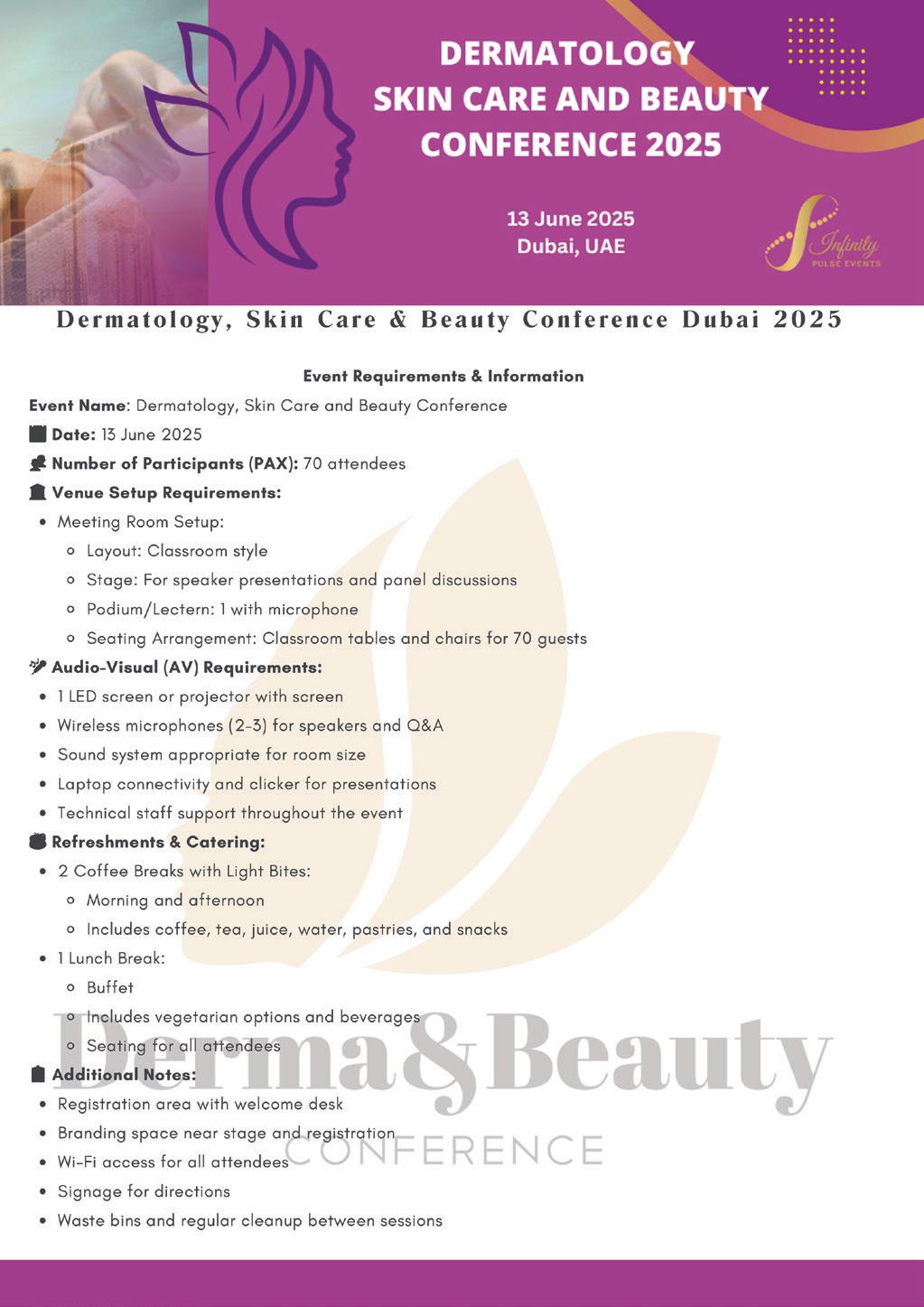
Advancing laboratory diagnostics: Beckman Coulter’s strategic vision for EEMEA healthcare
In this exclusive interview, Middle East Health speaks to Nurgül Vatansever EEMEA Vice President, Beckman Coulter, about the company’s latest diagnostic innovations and strategic direction. With systems testing over one million samples globally each hour, Beckman Coulter continues to advance laboratory medicine through high-throughput analysers like the DxI 9000 and automation solutions. Vatansever discusses how these technologies address critical healthcare challenges, from workforce constraints to growing diagnostic demand, whilst sharing insights on emerging biomarkers and the company’s collaborative approach to strengthening healthcare systems across EEMEA regions.
Middle East Health: Beckman Coulter has a world-renown legacy in the diagnostics industry. How would you characterize the company’s current position in the global diagnostic industry, and what unique value does it bring to healthcare systems across EEMEA regions?
n Nurgül Vatansever: Every hour around the globe, more than one million samples are tested on Beckman Coulter Diagnostic systems, impacting 1.2 billion patients and more than three million clinicians every year. Through our innovative diagnostic solutions, we are focused on ensuring clinical laboratories across EEMEA provide accurate diagnostic information to clinicians and patients that enables high quality care.
What sets us apart is how we help healthcare systems tackle real challenges like limited resources, workforce constraints, and growing demand. Our scalable portfolio— in immunoassay, chemistry, haematology, microbiology, and urinalysis – helps labs do more with less.
By automating key lab processes, we re duce manual workload and improve rapid and reliable sample analysis results. That means clinicians get the answers they need faster, and patients can begin treatment sooner. It’s all about enabling better out comes with greater efficiency.
MEH: The launch of the DxI9000 Immu noassay Analyzer represents a significant advancement in diagnostic technology. Could you elaborate on how its technical capabilities – particularly its throughput capacity and reduced sample volume requirements – are transforming clinical laboratory workflows and patient care?

served from its implementation?
n NV: The launch of the DxI 9000 Immunoassay Analyzer truly marks a new chapter in diagnostic innovation. Its highthroughput capacity and high sensitivity immunoassay testing capabilities for the core labs are standout features – allowing labs to process a significantly greater volume of samples with speed and precision. The ability to streamline workflows and re-
n NV: The DxC 500i Clinical Analyzer is designed to bring automation to the lowthroughput space, particularly for integrated health networks with multiple smaller laboratories. The DxC 500i combines advanced technology with an intuitive user interface, ensuring that laboratories of all sizes can meet the growing demands of modern healthcare. With throughput of up to 800 clinical chemistry tests per hour and 100 immunoassay tests per hour, this analyzer delivers precise and reliable results critical for timely clinical decision-making. It addresses the challenge of delivering
precise diagnostics with fewer resources by streamlining workflows and reducing the need for manual intervention. This ensures more consistent, reliable results, ultimately helping labs operate more efficiently without compromising on diagnostic quality.
MEH: What emerging biomarkers or diagnostic parameters is your R&D pipeline exploring that could transform early disease detection in the next 3-5 years?
n NV: We are very excited about our pipeline of diagnostics assays to address a wide range of diseases. For example, the DxI 9000 Analyzer has shown the capability to develop increasingly sensitive and clinically relevant assays. Leveraging this capability, we are developing a blood-based Alzheimer’s disease test. Recently, the U.S. Food and Drug Administration (FDA) has granted Breakthrough Device Designation to Beckman Coulter’s pending Access p-Tau217/ -Amyloid 1-42 plasma ratio. This blood test is designed to aid healthcare providers identify patients with amyloid pathology associated with Alzheimer’s disease.
MEH: What collaborative initiatives has Beckman Coulter developed with healthcare professionals to strengthen diagnostic precision and scalability?
n NV: At Beckman Coulter Diagnostics, we place great value on partnerships with all levels of stakeholders, including healthcare professionals, channel partners, and institutions. We collaborate closely with these partners to identify unmet needs, create tailored solutions, engage through thought leadership programs, and drive continuous innovation. This approach helps us anticipate the future of diagnostics, optimize professional education, and integrate advanced technologies to enhance patient care.
MEH: Educational partnerships often accelerate adoption of advanced diagnostic platforms. What specific educational projects has your team implemented to ensure healthcare professionals can maximize the clinical utility of your technologies?
n NV: Education is a cornerstone of our strategy to support the adoption of advanced diagnostics. One of our key ini-
tiatives is the Beckman Coulter Dubai Vision Centre – a dedicated learning facility offering certified service and application training, tailored customer programs, and scientific lectures. We provide interactive tutorials, hands-on workshops, and comprehensive training materials, all customized to meet the specific needs of laboratories across the EEMEA region.
Through these educational partnerships, we ensure healthcare professionals are fully equipped to maximize the clinical utility of our technologies.
MEH: Your career trajectory has led you to this pivotal leadership role. What formative experiences shaped your understanding of the diagnostic sector’s challenges,and how do these insights inform your strategic direction for the EEMEA region?
n NV: Starting my career as the first female engineer at Hitachi Medical Systems in Turkiye, I’ve had the opportunity to work across diverse geographies – including Russia, Eastern Europe, the Middle East, and Africa. These experiences have provided me with a broad perspective on the healthcare sector’s unique challenges and opportunities. They shaped my understanding of critical issues such as unequal access to diagnostics, infrastructure and workforce limitations.
They also reinforced the importance of scalable, locally relevant solutions and the power of strong partnerships. At Beckman Coulter Diagnostics, these insights guide
About Nurgül Vatansever
my strategic direction for the EEMEA region partnering with our customers to expand access to high-quality diagnostics, investing in education and service excellence, and collaborating closely with stakeholders to strengthen healthcare systems and enhance patient care.
MEH: Can you tell us a bit about your leadership style? What’s your method for building a productive workplace culture and effective employee engagement?
n NV: My leadership style is focused on collaboration, empowerment, and datadriven decisions, with a strong emphasis on compassionate leadership. I aim to create an environment where team members feel valued, trusted, and motivated to take ownership of their work. Open communication, empathy, and continuous improvement are key to fostering success together. For building a productive workplace culture and effective employee engagement, I focus on accountability, respect, and celebrating both individual and team achievements. I prioritize staying engaged with my team, ensuring that everyone feels supported and empowered to grow in their roles. By fostering psychological safety and maintaining an open-door mentality, I encourage team members to express ideas freely without fear of judgment. This, combined with clear expectations and ongoing feedback, builds a foundation of trust that strengthens the team’s ability to innovate and perform at its best.
Nurgül Vatansever is the EEMEA Vice President at Beckman Coulter. In addition to driving commercial priorities, she is dedicated to fostering a high-performance culture by providing strategic leadership, coaching, and talent development across the region.
With extensive experience in the healthcare industry, Nurgül has managed diverse markets across the Middle East, Africa, Turkey, Russia, CIS countries, and Central Eastern Europe. She has held senior leadership roles of increasing responsibility in sales, services, marketing, and general management at Medtronic, Johnson & Johnson, GE Healthcare, and Hitachi Medical Systems.
Over her 25-year career in the medical devices and healthcare industry, she has been recognized for her commitment to ethical leadership, cultivating a winning culture, and prioritizing talent by attracting, developing, and retaining high-performing, diverse teams.
Surgery
Prothrombin complex concentrate outperforms frozen plasma in managing bleeding during cardiac surgery
Groundbreaking clinical trial results show that 4-factor prothrombin complex concentrate reduces major bleeding risk by nearly 50% compared to frozen plasma in cardiac surgery patients. The concentrated clotting factor preparation was not only more effective at controlling bleeding but also resulted in fewer serious adverse events and reduced kidney injury, according to research published in JAMA
A multicentre randomised clinical trial has demonstrated that prothrombin complex concentrate (PCC) is significantly more effective than frozen plasma for controlling bleeding in cardiac surgery patients, offering a potential paradigm shift in managing this common complication.
The research, co-led by the University of Oklahoma and published 29 March in the Journal of the American Medical Association, found that non-activated four-factor prothrombin complex concentrate (4FPCC) significantly reduced the risk of severe bleeding compared to traditional frozen plasma therapy, with nearly 50% lower risk of major bleeding.
Superior efficacy without increased risk
The FARES-II clinical trial enrolled 538 patients undergoing cardiac surgery across 12 hospitals in Canada and the United States who developed bleeding related to coagulation factor deficiency after cardiopulmonary bypass. In the primary analysis of 420 patients, those receiving PCC showed markedly better outcomes.
The haemostatic effectiveness – defined as requiring no additional haemostatic in-

is its concentration, according to the researchers. When a cardiac surgery patient
bleeding more efficiently,” Tanaka explained. “It’s like drinking espresso versus
Kenichi Tanaka, M.D., is a professor and chair of the Department of Anesthesiology at the University of Oklahoma College of Medicine.
University of Oklahoma
regular coffee in the morning – because espresso is highly caffeinated, you don’t have to drink as much to achieve the same caffeine level.”
This concentration difference translated to clinical benefits. Patients in the PCC group received significantly fewer transfusions of red blood cells, platelets, and noninvestigational frozen plasma units (mean 6.6 units vs 9.3 units in the frozen plasma group, P=0.002). They also had less chest tube drainage at both 12 and 24 hours.
Biological plausibility for superior results
The authors explain in their paper that the finding of superior haemostatic efficacy for PCC is biologically plausible: “PCC is designed to be more prohaemostatic than frozen plasma. Although PCC does not contain the full array of coagulation factors that are present in frozen plasma, its procoagulant factor levels are 25 times
more concentrated than in frozen plasma.”
This makes PCC particularly well-suited for rapidly replenishing the coagulation factors needed to boost thrombin generation, which is often impaired after cardiopulmonary bypass surgery and can be an important cause of excessive bleeding.
Resource implications
Beyond clinical benefits, the authors note significant resource implications. In this study alone, the PCC group received approximately 95% fewer frozen plasma units than the frozen plasma group (49 units vs 1001 units).
“I think it will also improve resource utilisation,” added Tanaka. “4F-PCC can be given to patients with any blood type; we won’t need to keep as many blood-type specific frozen plasmas for heart surgery patients. With better bleeding control, we may consume less resources in the ICU.”
The study authors estimate that in the US alone, using PCC instead of frozen plasma in cardiac surgery would save approximately 350,000 units of frozen plasma annually that could be redirected to address supply challenges in plasma-derived medicinal products.
Given these findings, the authors conclude that “preferentially using PCC over frozen plasma for bleeding management in cardiac surgery could have benefits for patients (by reducing bleeding and exposure to allogeneic blood products) and for the health care system (by relieving pressures on the blood supply and hospital resources).”
However, they caution that the clinical and financial impacts of such a major change in current practice need to be assessed in future studies, along with the generalisability of these findings to other surgical settings.
Reference:
Karkouti, K., Callum, J. L., Bartoszko, J., et. al. (2025). Prothrombin complex concentrate vs frozen plasma for coagulopathic bleeding in cardiac surgery: The FARES-II multicenter randomized clinical trial. JAMA. Published online March 29, 2025. doi: https://doi.org/10.1001/jama.2025.3501
New study reveals TCAR outperforms TF-CAS for stroke prevention in carotid artery stenosis
Surgical transcarotid artery revascularisation (TCAR) demonstrated significantly lower stroke risk compared to percutaneous transfemoral carotid artery stenting (TF-CAS) over a 3-year follow-up period, according to a comprehensive comparative effectiveness study published in JAMA Network Open, offering critical guidance for physicians and patients selecting carotid stenting procedures.
In the rapidly evolving landscape of carotid artery stenosis treatment, a landmark comparative effectiveness study has provided the first long-term data on stroke outcomes between two primary stenting techniques. The research, published in JAMA Network Open on 25 April 2025, followed nearly 10,000 patients who underwent either transcarotid artery revascularisation (TCAR) or transfemoral carotid artery stenting (TF-CAS), finding consistently lower stroke risk with TCAR among both asymptomatic and symptomatic patients
during a 3-year follow-up period.
The study addresses a significant knowledge gap in the field of vascular surgery, as TCAR—despite being widely adopted across more than 600 US centres—has never been evaluated in a randomised clinical trial, while previous observational studies comparing TCAR and TF-CAS have been limited to periprocedural outcomes or shorter follow-up periods.
Filling a critical evidence gap
Led by Dr Jesse A. Columbo of Dartmouth-
Hitchcock Medical Center and colleagues, this retrospective cohort study utilised data from the Vascular Implant Surveillance and Outcomes Network (VISION), a procedural registry linked to Medicare claims data. The researchers analysed outcomes for 5,798 asymptomatic patients and 4,721 symptomatic patients who underwent carotid stenting between October 2016 and December 2019.
“In the absence of longer-term results, the comparative stroke risk associated with these procedures remains undefined. This knowledge gap limits both clinicians and patients
Surgery
in their ability to make an informed decision regarding which procedure is better for durable stroke prevention,” the researchers noted, highlighting the importance of their work.
The researchers used a validated claims code method to identify strokes after hospital discharge, and applied multiple statistical approaches to ensure robust analysis, including propensity score matching and instrumental variable analysis to account for potential confounding factors.
TCAR shows superior outcomes across patient groups
The results demonstrated a clear advantage for TCAR over TF-CAS. Among asymptomatic patients, the 3-year stroke risk was 5.1% after TCAR compared to 9.2% after TF-CAS. For symptomatic patients, the difference was also significant: 16.6% for TCAR versus 20.9% for TF-CAS.
When adjusted for various clinical and demographic factors, the hazard ratio for stroke after TF-CAS compared to TCAR was 1.69 for asymptomatic patients and 1.42 for symptomatic patients, both statistically significant. This finding remained consistent across all sensitivity analyses.
Importantly, the research showed that the stroke risk difference was most pronounced within the first 30 days after the procedure, suggesting that procedural differences between the two techniques are a key factor.
Mortality and composite outcomes (stroke or death) also favoured TCAR. For asymptomatic patients, the 3-year mortality was 21.5% after TCAR versus 26.2% after TF-CAS, while the composite outcome was 22.6% for TCAR compared to 31.4% for TF-CAS. Similar advantages were observed in symptomatic patients.
Potential mechanisms behind TCAR’s advantage
The authors explained the potential mechanisms behind TCAR’s superiority: “There are 2 primary mechanisms that may explain the observed decreased stroke risk associated with TCAR compared with TFCAS. The divergence in the risk of stroke
between the 2 procedures primarily appeared in the periprocedural period, which suggests that there are significant risk differences in the conduct of the 2 stenting procedures, rather than longer term.”
They added: “TCAR is performed via a low-neck incision with direct carotid artery access, obviating the need to traverse the aortic arch that is required with TF-CAS, which may be a risk factor for embolic stroke. In addition, TCAR is performed using flow-reversal for embolic protection, which can be initiated before manipulation of the carotid lesion.”
By contrast, TF-CAS uses distal filter embolic protection, requiring operators to cross the carotid lesion before filter deployment—a manoeuvre potentially associated with stroke risk.
Clinical practice versus trial results
An important observation from the study was that the observed stroke and mortality risks were higher than those reported in previous randomised clinical trials (RCTs) of TF-CAS. The authors suggest this reflects the reality of everyday clinical practice versus the highly controlled environment of clinical trials.
“Results from clinical practice studies, such as this one, can offer a complementary perspective to the results of RCTs, documenting how the procedures may perform once they are in widespread use,” they noted. “The higher stroke and mortality risks we report provide the sobering view that carotid stenting procedures may not perform as well in clinical practice as may be anticipated on the basis of the results of RCTs.”
This observation is particularly relevant given recent changes in US regulatory oversight. In October 2023, the Centers for Medicare & Medicaid Services (CMS) expanded coverage for carotid artery stenting and removed the strict federal oversight of quality and outcome benchmarks that had been maintained since 2005, transferring this responsibility to individual institutions.
In the absence of an RCT, these data represent important findings to inform future procedure choices for patients considering carotid stenting and add to the growing body of literature to support the growing role of TCAR in the treatment of carotid artery stenosis.
Implications for clinical practice
The authors emphasised the timeliness of their findings: “In the absence of an RCT, these data represent important findings to inform future procedure choices for patients considering carotid stenting and add to the growing body of literature to support the growing role of TCAR in the treatment of carotid artery stenosis.”
The researchers concluded: “In this comparative effectiveness study, TCAR was associated with a lower risk of stroke than TFCAS. This finding was consistent in both asymptomatic and symptomatic patients and durable over a 3-year interval. These findings can inform procedure choices for patients considering carotid artery stenting.”
Given that there are no completed or enrolling randomised clinical trials evaluating TCAR against other methods, these comparative stroke risk results provide valuable evidence to guide clinicians and patients in selecting the most appropriate carotid stenting approach.
While acknowledging limitations inherent to observational research, the authors conducted multiple sensitivity analyses with consistent results. The study’s use of Medicare-linked data may limit generalisability to non-Medicare populations, but the large sample size and rigorous methodology strengthen the reliability of the findings.
As carotid stenting techniques continue to evolve and regulatory oversight changes, this study provides critical evidence that should inform clinical decision-making and potentially influence future practice guidelines for the management of carotid artery stenosis.
Reference: Columbo, J. A., Martinez-Camblor, P., Stone, D. H., et. al. (2025). Effectiveness of transcarotid vs transfemoral carotid stenting for stroke prevention. JAMA Network Open, 8(4), e259143. https://doi.org/10.1001/jamanetworkopen.2025.9143


Transforming healthcare practice with UpToDate and UpToDate Lexidrug: A case study and interview from the United Arab Emirates
This Expert Insight explores the transformative impact of UpToDate and Lexidrug in addressing clinical complexity with Dr. Khaled Aboeldahab.
Clinical complexity is increasing at unprecedented rates in the Middle East and the UAE healthcare spending [1] is projected to reach US$30.7 billion (AED112.6 billion)—the highest healthcare spending growth rate in the Gulf Cooperation Council (GCC). Care teams need access to the best resources possible to improve outcomes and control costs. Leadership can identify these resources by prioritizing tools that support tailored treatment plans, facilitate access to real-time information, center the clinician experience, and encourage professional development.
Equipping clinicians to navigate growing clinical complexity is the first step in standardized patient care [2]. When clinicians don’t receive the support of evidence-based tools, the risk of variation in care is significantly higher—a gamble that is a loss for patients, clinicians, and provider organizations alike.
To help you better understand how healthcare organizations in the Middle East are revolutionizing healthcare with evidence-based medicine tools [3], we’re delving into the transformative impact UpToDate® Lexidrug™ drug information at Global Care Hospital in Abu Dhabi, a facility known for its world class care and commitment to compassion and innovation through the experiences of Dr. Khaled Aboeldahab, expert and founder of the Long-Term Care (LTC) and Rehabilitation. [H2] Exploring the transformative impact of UpToDate with Dr. Aboeldahab
Middle East Health: Can you provide an overview of your role and involvement with UpToDate and Lexidrug?
As a senior physician, my role involves overseeing clinical practices and ensuring that my medical team has access to the best resources available.
My involvement with UpToDate began
in 2021 when we introduced it to address the constant need for reliable clinical information. Recognizing the additional need for detailed drug information, we integrated Lexidrug in 2022. These tools became indispensable in my daily operations, aiding both junior and senior staff in making informed decisions and optimizing medication choices.
MEH: What benefits do you believe UpToDate and Lexidrug bring to the medical field? UpToDate provides a comprehensive, evidence-based resource that supports clinicians in making informed decisions. It helps reduce the unnecessary use of medications, particularly antibiotics, and guides appropriate dosing adjustments. Lexidrug enhances this by offering detailed drug information and interaction checks, crucial for managing complex medication regimens in our long-term care facility. Together, they improve patient care, reduce side effects, and lower healthcare costs.
MEH: What sets UpToDate and Lexidrug apart from other resources in the healthcare industry?
UpToDate stands out because of its extensive and continuously updated database of clinical information. The reliability and accuracy of the content, along with its user-friendly interface, make it a superior resource. Lexidrug adds value by providing precise drug information and interaction analysis, essential for our patients with chronic diseases requiring multiple medications. The integration of these tools offers a unified, authoritative source for clinical decision-making.
MEH: How do you see UpToDate and Lexidrug evolving in the future,particularly in addressing the changing landscape of healthcare? As healthcare continues to evolve, the need for accurate and timely information
will only grow. I see UpToDate incorporating more real-time data analytics and predictive tools to further support clinical decision-making. Lexidrug will likely expand its drug databases and interaction checks to include more personalized medicine insights. This evolution will be crucial in addressing emerging healthcare challenges and improving patient outcomes.
MEH: Can you share any success stories or impactful experiences related to UpToDate and Lexidrug that you’ve encountered?
One notable success involved a previous patient on an SSRI antidepressant who developed a fever after being prescribed an antibiotic. Initially, this was thought to be sepsis, but using UpToDate and Lexidrug, we identified an interaction between the SSRI and the antibiotic, which was the true cause. Changing the medication resolved the issue quickly. Such insights have been invaluable in improving patient care and managing complex cases.
MEH: As an advocate for UpToDate and Lexidrug,what key message or recommendation would you offer to your peers in the medical community?
I would strongly recommend incorporating UpToDate and Lexidrug into daily practice. These tools are essential for supporting evidence-based medicine and enhancing the quality of care provided to patients. The ability to access reliable information at any time is invaluable. The tools not only support clinical decisions but also foster a standardized approach to patient care.
MEH: How satisfied are you with your experience with UpToDate and Lexidrug?
I am extremely satisfied with both UpToDate and Lexidrug. They have significantly improved clinical practices, reduced medication errors, and optimized patient outcomes.
The feedback from my medical team has been overwhelmingly positive, and the support from Wolters Kluwer has been excellent, ensuring any issues are resolved promptly.
MEH: Do you have any additional insights or perspectives you’d like to share about UpToDate and Lexidrug?
UpToDate and Lexidrug have become more than just reference tools; they are integral to our practice. Their continuous updates and evidence-based recommendations help clinicians stay at the forefront of medical care, ensuring that patients receive the best possible treatment. They also play a crucial role in training medical students and new staff, making them indispensable in modern medical practice.
MEH: Can you give an example of a time when UpToDate and Lexidrug provided critical information that influenced a patient’s treatment plan?
Certainly. In one of my previous roles, we had a case where a patient with compromised renal function needed precise dosing adjustments for multiple medications. Using UpToDate and Lexidrug, we were able to tailor the treatment plan accurately, avoiding potential complications and ensuring effective therapy. This precise management was particularly crucial given the advanced age and complex medical conditions of our patients.
MEH: How does using UpToDate and Lexidrug contribute to more efficient use of your time and resources in your practice?
UpToDate and Lexidrug save time by providing immediate access to reliable information, reducing the need for extensive searches or consultations. The platform’s use of AI minimizes search time. It chooses the exact topic that the physician is searching for based on the physician’s specialty and the question asked and can even suggest some differential diagnoses. These efficiencies allow clinicians to focus more on patient care and less on administrative tasks, thereby optimizing resources. The unified decision-making process also minimizes unnecessary queries and ensures consistent, high-quality care.
MEH: How would you describe the overall impact of UpToDate and Lexidrug on your professional development and patient care?
UpToDate and Lexidrug have had a profound impact on both my professional development and patient care. They keep me informed about the latest medical advancements and best practices, which translates
to better patient outcomes and continuous professional growth. They also foster a culture of evidence-based medicine within our team, promoting lifelong learning.
The application of AI also contributes to patient safety. Integration with the EMR can raise red flags for severe medication interactions and provide certain advice based on the patient’s condition.
MEH: Do you find UpToDate and Lexidrug’s mobile apps useful for accessing information on-the-go? Can you share an example? Yes, the mobile apps are incredibly useful. For instance, during a recent patient round, I needed to check a drug interaction. Using the apps, I quickly accessed the information and made an informed decision without delay. This immediacy is crucial in a clinical setting, ensuring timely and accurate patient care.
MEH: Can you discuss any cost-benefit analyses you’ve encountered where UpToDate and Lexidrug demonstrated clear financial savings for your practice or institution?
Implementing UpToDate and Lexidrug has led to significant financial savings, particularly by reducing unnecessary antibiotic use and optimizing medication choices. This has decreased overall pharmacy expenditures and minimized complications, resulting in lower treatment costs. Additionally, morbidity and mortality rates decreased, reflecting improved patient outcomes and cost efficiency.
MEH: How do you see the role of continuous professional development evolving in the Middle East, and how can UpToDate and Lexidrug support this evolution?
Continuous professional development is becoming increasingly important in the Middle East. UpToDate and Lexidrug can support this evolution by providing healthcare professionals with access to the latest medical knowledge and best practices, ensuring they remain current in their fields and can deliver high-quality care. These tools are essential for fostering a culture of lifelong learning and evidence-based practice.
MEH: In your opinion, how can widespread use of UpToDate and Lexidrug improve overall healthcare outcomes in the Middle East?
Widespread use of UpToDate and Lexidrug
References:
1. https://www.wam.ae/en/details/1395303163635
Dr. Khaled Aboeldahab is the Head of Long-Term Care and Rehabilitation at Global Care Hospital in Abu Dhabi. With a master’s degree in Critical Care Medicine from Alexandria University, Dr. Aboeldahab has over two decades of experience in the Gulf region’s healthcare sector. His leadership and business development skills have been instrumental in expanding healthcare services and generating significant revenue in his previous roles, including as the CEO of Burjeel Darak Unit. He is currently focused on driving the business development and expansion efforts for healthcare groups across the UAE and Gulf region. Dr. Aboeldahab is also an experienced healthcare consultant, well-versed in critical care, long-term care, and healthcare management.
can significantly improve healthcare outcomes in the Middle East by standardizing clinical practices, reducing variability in patient care, and ensuring that all clinicians have access to the most current and accurate medical information. This unified approach can lead to better patient outcomes and more efficient healthcare delivery.
MEH: What role do UpToDate and Lexidrug play in improving the overall financial health of a practice or hospital?
UpToDate and Lexidrug play a crucial role in improving a practice’s or hospital’s financial health by optimizing medication usage, reducing unnecessary tests and treatments, and minimizing complications. These factors collectively contribute to more efficient and cost-effective healthcare delivery, enhancing both clinical and financial performance.
The transformative impact of UpToDate on healthcare organizations Eventually, with increased use by more provider organizations, the UAE can expect to enjoy improved healthcare outcomes through widespread standardization of clinical practices and providing more of their clinicians with access to current and accurate medical information across the country.
• Learn how UpToDate enables clinicians through clinical decision support: https://www.wolterskluwer.com/en/solutions/ uptodate
2. https://www.wolterskluwer.com/en/expert-insights/how-standardized-care-helps-hospitals-and-patients
3. https://www.uptodate.com/contents/evidence-based-medicine


The future of anatomical education: VR, 3D models, and AI poised to transform traditional cadaver-based learning
Middle East Health speaks to Dr. Mange Manyama, Assistant Professor at Weill Cornell Medicine-Qatar, about the transformative impact of technology on anatomy education. From VR headsets and 3D Organon software to AI-powered simulations, Dr. Manyama explores how digital tools complement traditional cadaver dissection while enhancing student engagement, accessibility, and personalized learning.
Middle East Health: Could you please describe human anatomy in medical education?
Human anatomy is the study of the human body’s structures and systems, essential for understanding how organs, tissues, and cells function together. It is a foundational subject in medical and health sciences, crucial for diagnosing diseases, developing treatments, and advancing fields like surgery and biomedical research.
MEH: How has technology in anatomy education evolved?
Traditionally, anatomy was taught using cadaver dissection and 2D imaging. In recent years, however, new technologies such as virtual reality (VR), augmented reality (AR), and 3D models have been introduced to teach anatomy, complementing and, in some cases, entirely replacing traditional methods in certain institutions.
MEH: How effective are these technological tools?
Technological tools like VR and digital platforms have significantly enhanced the study of anatomy by addressing the limitations of traditional methods. While cadavers and 2D images are static and physically constrained, VR and tools like the anatomage table allow students to interact with and manipulate anatomical structures in a dynamic, immersive way. These tools en-
able multiple users to connect simultaneously, fostering collaboration among students and teachers. They are particularly effective for understanding complex areas such as the perineum, head, and neck, which can be challenging to study through 2D images or cadaveric dissection. With VR, students can explore structures layer by layer, label them, and gain a deeper understanding.
Additionally, these digital tools are accessible, so students do not have to be physically in the laboratory for a particular time–they can work from anywhere. Our students are provided with headsets and can access these tools anytime, even at home. This flexibility enhances learning efficiency and ensures continuous engagement with the material.
MEH: What technological tools are available at WCM-Q and when were they implemented?
WCM-Q boasts a hi-tech Anatomage table, VR, AR, 3D models and simulations, and 3D printing, which allows the faculty to print and use a particular model for teaching.
The technology was first introduced at WCM-Q in 2017 with the Anatomage table, and VR was added two years later. WCM-Q has also procured enough headsets for each student. It is worth noting,
however, that we haven’t moved away from the traditional methods of teaching anatomy—the two complement each other.
MEH: How accurate and reliable are 3D anatomical models in representing actual human structures?
At WCM-Q, we utilize 3D Organon Anatomy software, a highly accurate digital tool that replicates anatomical structures with remarkable precision, closely mirroring what is found in the human body. While some students prefer learning through digital tools, others favor traditional cadaver dissection. For example, certain students find the physical aspects of cadaveric dissection—such as the sight of tissues and the strong smell of formaldehyde (formalin)—uncomfortable or overwhelming, making them more inclined toward digital alternatives. This flexibility allows students to choose the method that best suits their learning preferences and comfort levels.
However, with digital tools, one can manipulate structures, but there is no haptic feel like in cadaver dissection. For instance, a student can feel how hard or easy it is to make an incision. Therefore, students who want experience in a procedure-based field prefer cadaver dissection because it gives them a feel that digital tools cannot provide.
MEH: Can you explain how VR, AR, 3D models, and simulations enhance a stu dent’s understanding of human anatomy? These tools allow students to dissect virtu ally and discuss among themselves or with the instructor while looking at the same structure. In addition, some of these tools have functions whereby the instructor can track how the student is doing, provide in dividualized feedback for the learner, and create personalized tasks to meet each stu dent’s needs. Students can also work in a comfortable environment since some are sensitive to the smell of formaldehyde.
These digital platforms have also im proved student engagement and interactiv ity in the anatomy course; for instance, with VR, students are able to work collaboratively with headsets and their instructors.
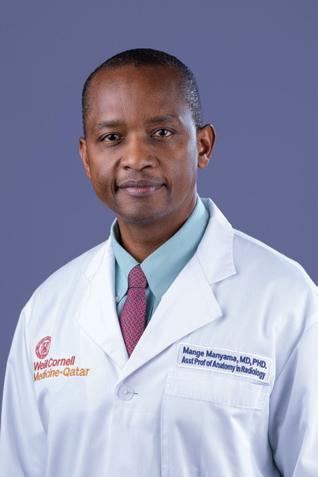
MEH: When WCM-Q integrated technology in anatomy teaching, how did educators adapt,and how did students respond? Thanks to the support of leadership, the implementation process of the digital tools at WCM-Q was very smooth.
Faculty, staff, and students also embraced the technology quite early on. To keep up with the evolving technology, faculty and staff undertake courses or attend conferences, so they have been able to adapt easily.
MEH: What challenges come with incorporating technology into anatomical education? When it comes to digital tools, the challenge has been acquiring hardware and software that cater to all curriculum needs. For instance, with VR, you need hardware that meets the requirements of our comprehensive curriculum. Sometimes, the software only covers a specific area, which can be limiting.
Cadaver dissection has been the traditional method for teaching anatomy for many years, and some educators might hesitate to incorporate new methods. Most educators were, of course, trained using cadavers, so shifting to or integrating new approaches can be challenging. However, at WCM-Q, we are all willing to explore, embrace, and learn about new tools as they emerge.
MEH: What emerging technologies do you think will shape the future of anatomical education?
Dr. Mange Manyama
Radiology
Weill Cornell Medicine-Qatar (WCM-Q)
“Embrace technology as a tool to overcome some of the challenges posed by traditional teaching methods.”
Dr. Mange Manyama joined Weill Cornell Medicine-Qatar (WCM-Q) in 2016 and currently holds the position of assistant professor of anatomy in radiology, as well as course director for Essential Principles of Medicine-B.
Dr. Manyama is a recipient of WCM-Q’s Medical Education Research Grants Program 2025 and the principal investigator for a project titled ‘Development and Assessment of a 360° Video-Based Virtual Reality Application to Enhance Medical Students’ Preparation for Initial Cadaver Dissection.’ He has received multiple research grants and has published extensively in peerreviewed journals.
Technology is evolving rapidly, and I believe Artificial Intelligence (AI) will be a game-changer in anatomy education. AIpowered visual tools have the capacity to generate materials tailored to individualized learning needs.
With AI-powered tools, technology will focus on bridging the gap between education and clinical practice by offering simulations that connect basic sciences with clinical applications. For example, students can virtually practice performing a specific surgery and experience haptic feedback, enhancing their learning experience.
My advice is to embrace technology as a tool to overcome some of the challenges posed by traditional teaching methods.
MEH: Do you think technology will replace cadaver-based learning?
I see this becoming a reality in the future, especially in the developed world. Things are evolving rapidly; for example,
the Anatomage table now includes simulations for delivering a baby, understanding how the heart works, and interpreting electrocardiograms (ECGs)—features that were not available initially.
Currently, we are exploring Holodeck, a platform that generates images based on cadavers, enabling virtual cadaver dissection. Given this trend, technology may become the preferred approach for many, as running a cadaver laboratory is significantly more expensive compared to technology-based learning methods.
• Visit our website, explore CPD events, and connect with us on social media for updates.

Early detection, lasting impact: Transforming autism care in the UAE
Sahil Maria, a Board-Certified Behavior Analyst (BCBA) and Senior Program Specialist at the New England Center for Children Clinic - Dubai, examines emerging diagnostic protocols and intervention efficacy for autism spectrum disorder in the UAE. This analysis highlights critical neurological markers, evidence-based therapeutic approaches, and the implementation of multidisciplinary frameworks that significantly enhance developmental trajectories when applied during key windows in early childhood.
April was marked globally as Autism Awareness Month, dedicated to building understanding, promoting inclusion, and advocating for the rights of autistic individuals. In the United Arab Emirates, the importance of early diagnosis and intervention has gained focus in recent years, supported by inclusive care, public awareness campaigns, and efforts to enhance access to specialised services. These services ensure families are equipped with the tools they need to help their children thrive in society. Early detection of Autism Spectrum Disorder (ASD) allows for timely, evidence-based interventions that can significantly improve the developmental trajectory of children.
Early signs of autism
Before exploring early diagnosis, it’s important to understand the signs that may appear in a child’s first years. While symptoms can vary widely, they typically begin to emerge between 12 and 24 months, though subtle differences in development may be observable earlier.
Research has indicated that some early indicators, such as reduced eye contact, limited social smiling, and minimal response to social cues, can be seen as early as 6 months, though not reliably diagnosed at that stage. By around 12 months, signs like a lack of response to name, absence of pointing or gesturing, and limited interest
in social interaction may become more apparent. By 18 to 24 months, patterns in behaviour, communication, and play often become clearer, prompting further evaluation.
Some common early signs include:
• Limited eye contact: difficulty in making or maintaining eye contact.
• Delayed speech and communication: delays in babbling by 12 months, speaking words by 16 months, or forming simple phrases by the age of two. Some children may also lose previously acquired language or social skills.
• Repetitive behaviours: This includes movements such as hand-flapping, rocking, or spinning objects.
• Unusual sensory responses: heightened or reduced sensitivity to sound, texture, or light.
There is no single behaviour that confirms autism; rather, it’s the combination and intensity of these traits that may indicate the need for a professional diagnosis and evaluation.
Early diagnosis and the importance of timely intervention
Once early signs become apparent, the next essential step is obtaining a timely and accurate diagnosis. Decades of clinical research and practice have shown that the earlier a child with autism is diagnosed and begins intervention, the greater the poten-
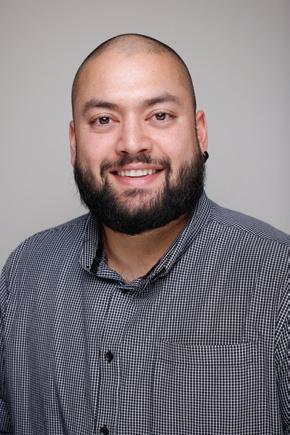
tial for positive developmental outcomes. Early diagnosis has been associated with improvements in communication, learning, social interaction, and adaptive behaviour, when treatment is started shortly after diagnosis. Best treatment gains have been found when intervention begins near age 2. Early intervention has also been subsequently found to reduce the cost of special education services across the lifespan.
Historically, autism diagnoses were often delayed until school age. Today, with increased awareness and enhanced screening tools, children are being identified earlier, sometimes before the age of two. Routine
Sahil Maria, Behaviour Analyst & Senior Program Specialist at The New England Center for Children Clinic - Dubai in Dubai Healthcare City (DHCC)
paediatric check-ups now commonly include developmental milestone checklists that help healthcare providers and families detect potential concerns early on.
A formal diagnostic evaluation is conducted by qualified professionals such as developmental paediatricians and psychologists. One of the most widely used tools is the Autism Diagnostic Observation Schedule, Second Edition (ADOS2). This standardised assessment evaluates communication, social interaction, play, and repetitive behaviours through structured activities. When combined with parental input and developmental history, it helps provide a comprehensive profile of the child’s strengths and needs.
In the UAE, increasing public awareness and the expansion of specialised services have improved access to early diagnosis. Paediatricians and interdisciplinary teams – particularly within integrated healthcare ecosystems like Dubai Healthcare City (DHCC) – are now better equipped to provide multidisciplinary assessments. At centres such as the New England Center for Children (NECC) Clinic - Dubai in DHCC, early screening is directly linked to individualised intervention planning, giving families a structured and supportive path forward.
Specialised treatments and care available
Although no single treatment works for all individuals with ASD, a variety of evidence-based interventions, particularly those grounded in developmental science and behavioural approaches, have been shown to significantly improve outcomes when tailored to each child’s unique needs.
Behavioural and communication-based therapies form the foundation of autism support. These programs typically target:
• Reducing interfering or disruptive behaviours
• Teaching daily living and self-help skills
• Supporting language and communication development
• Enhancing play, social interaction, and emotional regulation
• Promoting foundational and early academic skills
Among the most well-established approaches is Applied Behaviour Analysis

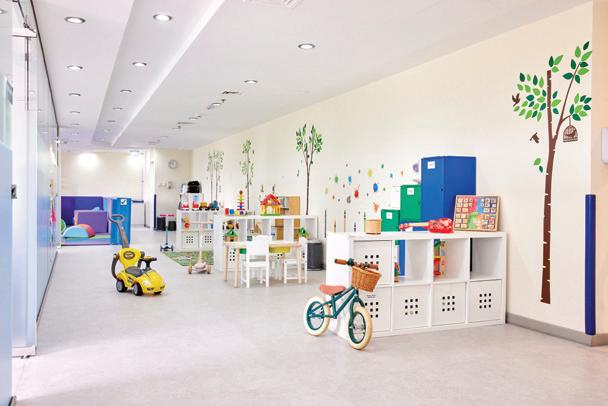
able teaching methods to increase desired behaviours and reduce those that may interfere with learning and independence. Programs are individualised, data-driven, and adjusted over time to ensure meaningful progress. Family involvement is essential. Caregivers are often trained to implement strategies at home, help generalise skills across settings, and actively support their child’s long-term development.
In Dubai, centres such as the NECC Clinic - Dubai in Dubai Healthcare City offer integrated, multidisciplinary treatment programmes. Children may receive ABA therapy alongside speech-language therapy and occupational therapy, depending on their individual needs.
For children with communication difficulties, speech-language therapy plays an important role in developing both verbal and nonverbal communication. Therapists use personalised strategies to help children
cabulary, and enhance their ability to engage with others. Occupational therapy, on the other hand, supports the development of fine motor skills, daily living skills, and addresses sensory integration challenges –common areas of need for many children on the autism spectrum.
Families seeking intervention services must ensure the professionals delivering them are appropriately trained and qualified. For instance, in the case of ABA, services should be supervised by a BoardCertified Behaviour Analyst (BCBA) or a Qualified Behaviour Analyst (QBA), credentialed by bodies such as the Behaviour Analyst Certification Board (BACB) or the Qualified Applied Behaviour Analysis Credentialing Board (QABA). This ensures the implementation of ethical, effective, and evidence-based practices. Typically, treatment plans are developed and overseen by trained behaviour analysts,
Autism
therapists, and technicians, who work collaboratively to address each child’s unique strengths and challenges.
By recognising the early signs of autism and accessing timely, professional support, families can connect to lifechanging resources that promote independence, communication, and quality of life. Early diagnosis and intervention remain key to improved long-term outcomes, and personalised care is central to that success.
In the UAE, growing public awareness and expanding access to specialised services are empowering more families to take action. Supported by the country’s continued investment in inclusive healthcare, through ecosystems like Dubai
Autism in the GCC
Healthcare City and centres such as the NECC Clinic - Dubai, a more inclusive and supportive future is taking shape for autistic children and their families.
About the author
Sahil Maria is a Board-Certified Behavior Analyst (BCBA) and Senior Program Specialist at the New England Center for Children Clinic - Dubai. With over ten years of experience in Canada and the UAE, he has worked across clinics, centers, schools, homes, and community settings. Sahil is passionate about the science of human learning and values Applied Behavior Analysis (ABA) for its evidence-based framework to understand behavior and guide meaningful, data-driven intervention.
Recent epidemiological data reveals striking variations in autism spectrum disorder (ASD) prevalence across Gulf Cooperation Council (GCC) countries, with Qatar reporting the highest rate at 151 per 10,000 individuals, followed by UAE (112), Oman (107), Bahrain (103), Saudi Arabia (101), and Kuwait (98). These figures position several GCC nations among countries with the highest autism rates globally, surpassing even the United States.
A 2024 systematic review highlights dramatic regional variations, with Saudi Arabia showing prevalence as high as 2.51% in certain studies – a staggering 250-fold increase compared to the lowest recorded rate of 0.01% in Oman from earlier surveys. This pattern of increasing prevalence mirrors global trends, likely reflecting improved awareness and diagnostic capabilities.
This field of research, however, remains critically underdeveloped. “Despite increasing prevalence rates, research about ASD in the GCC region is still limited,” notes a 2023 UAE-focused study. Key methodological concerns include culturally inappropriate assessment tools primarily designed for Western populations and significant heterogeneity in study methodologies.
Healthcare officials face substantial challenges in addressing this growing public health concern, including establishing culturally-appropriate screening protocols, expanding specialized services, and developing a more robust research infrastructure. Without strategic investment in these areas, the region risks falling behind in evidence-based autism interventions despite its economic resources.
The NECC Clinic – Dubai
The New England Center for Children (NECC) Clinic Dubai is a branch of the multinational organization helping children of determination gain skills they need to thrive. Through personalized care and education of students to research and training of staff, the clinic aims to impact as many lives as possible.
Headquartered near Boston, MA (USA), NECC runs consulting and clinic-based services in Abu Dhabi, Dubai, and Qatar for all nationalities and diagnoses as well as a school for Emirati children in Abu Dhabi. Their expertise is encapsulated in the Autism Curriculum Encyclopedia (ACE) ABA Software System that is commercially available to learners worldwide.
Genetic determinants of autism
Autism spectrum disorder (ASD) exhibits robust genetic etiology, with twin studies consistently demonstrating heritability estimates between 64% and 93% (Tick et al., 2016). This genetic contribution manifests through several distinct mechanisms operating concurrently.
High-impact rare variants occur in over 100 genes, with significant contributions from mutations affecting synaptic proteins (SHANK3), chromatin regulators (CHD8), and cell adhesion molecules (NRXN1) (Satterstrom et al., 2020). De novo mutations – genetic alterations absent in parents – account for approximately 30% of simplex autism cases, typically exerting stronger phenotypic effects than inherited variants (Iossifov et al., 2014).
Structural genomic abnormalities constitute another major contributor, with copy number variations (CNVs) identified in 5-10% of ASD cases. These chromosomal deletions or duplications disrupt multiple genes simultaneously, creating compound genetic effects (Sanders et al., 2015).
Common genetic variants with individually minimal effects collectively contribute substantially to autism risk through polygenic inheritance patterns. Research indicates these common variations may account for 40-60% of ASD liability (Gaugler et al., 2014).
These diverse genetic factors converge on critical neurodevelopmental pathways affecting synaptic function, transcriptional regulation, and neuronal connectivity during essential developmental periods (Willsey et al., 2013). This genetic heterogeneity explains the phenotypic diversity observed clinically and informs precision medicine approaches.
Clinical applications now include chromosomal microarray analysis and next-generation sequencing panels that identify genetic contributors in approximately 25-40% of ASD cases, enabling more targeted clinical management and improved prognostic insights.

